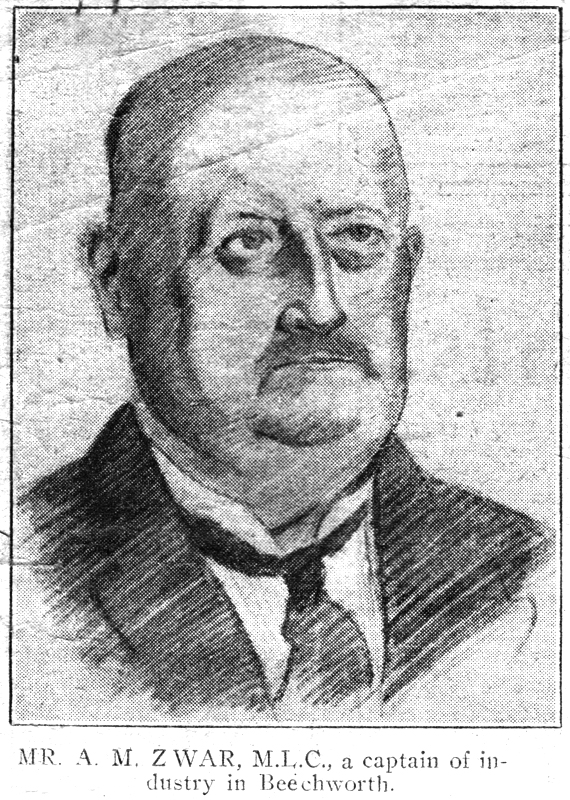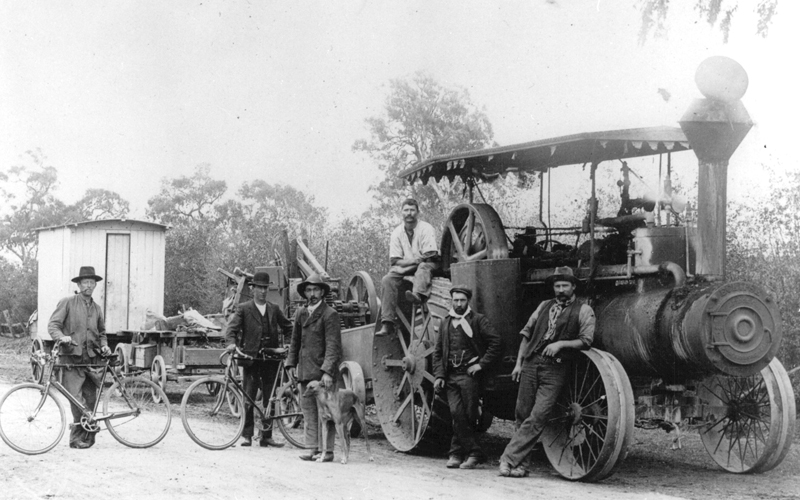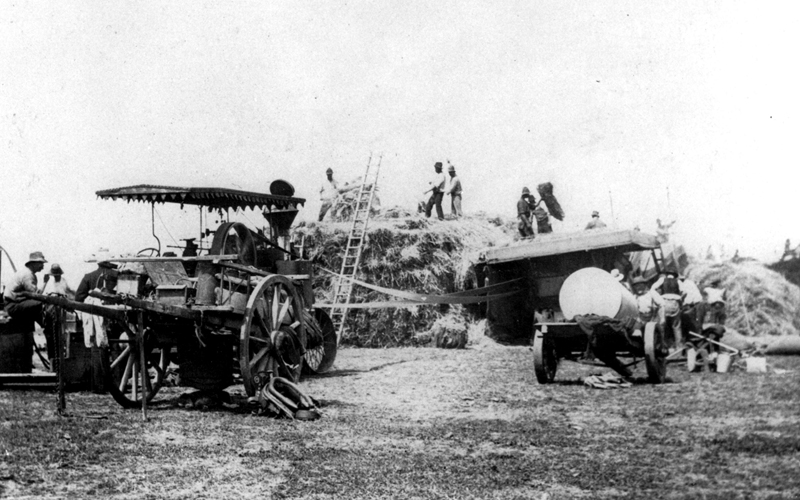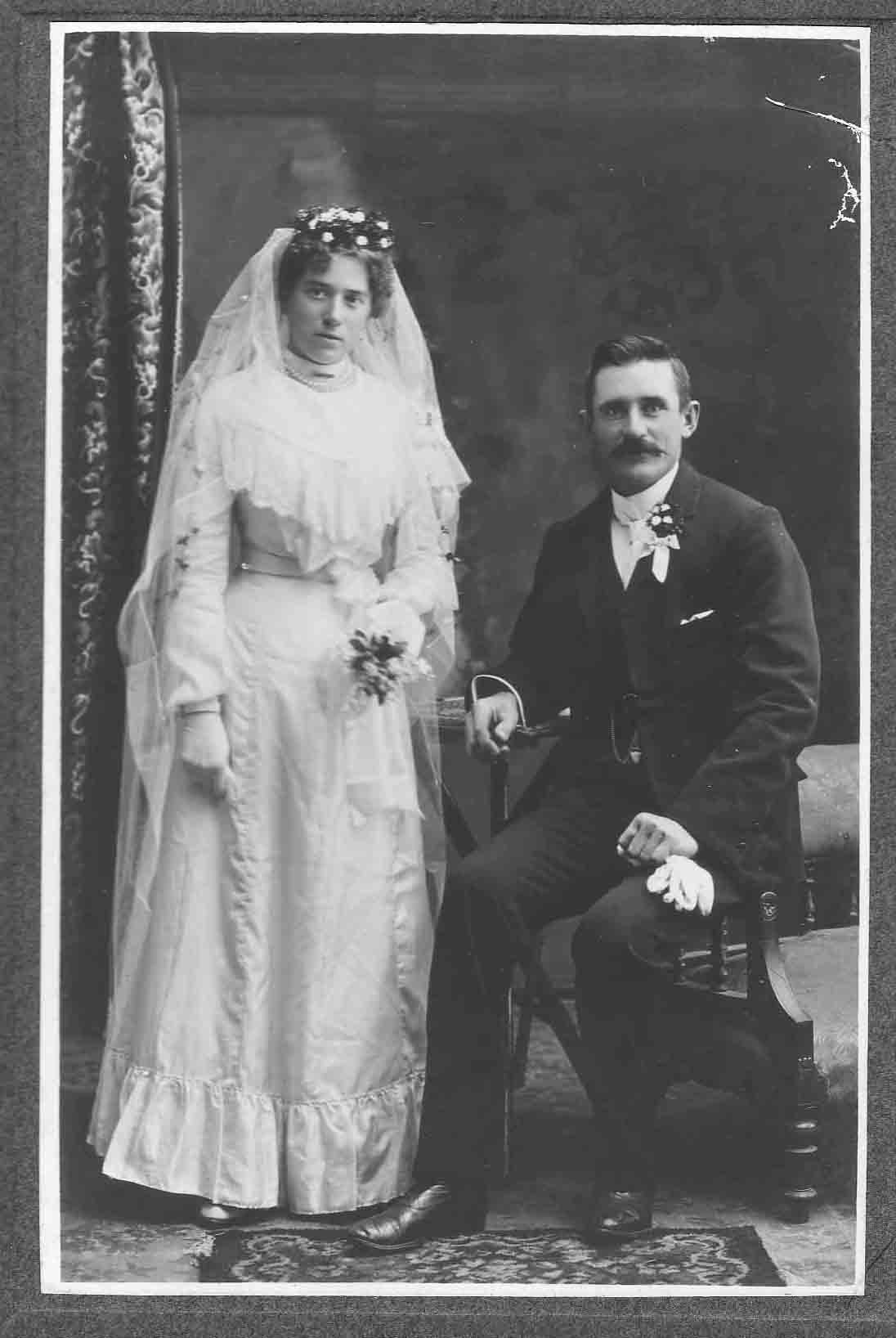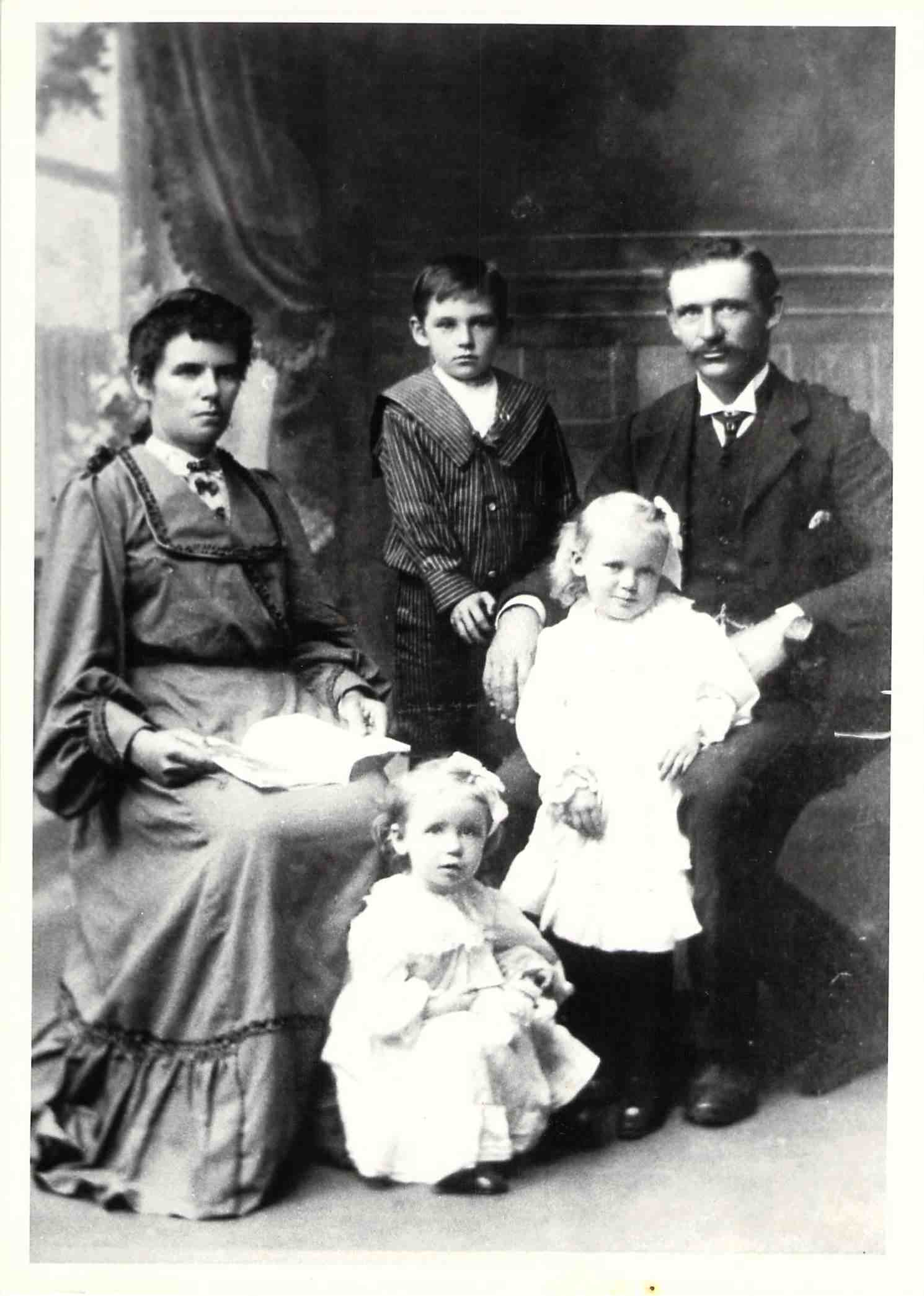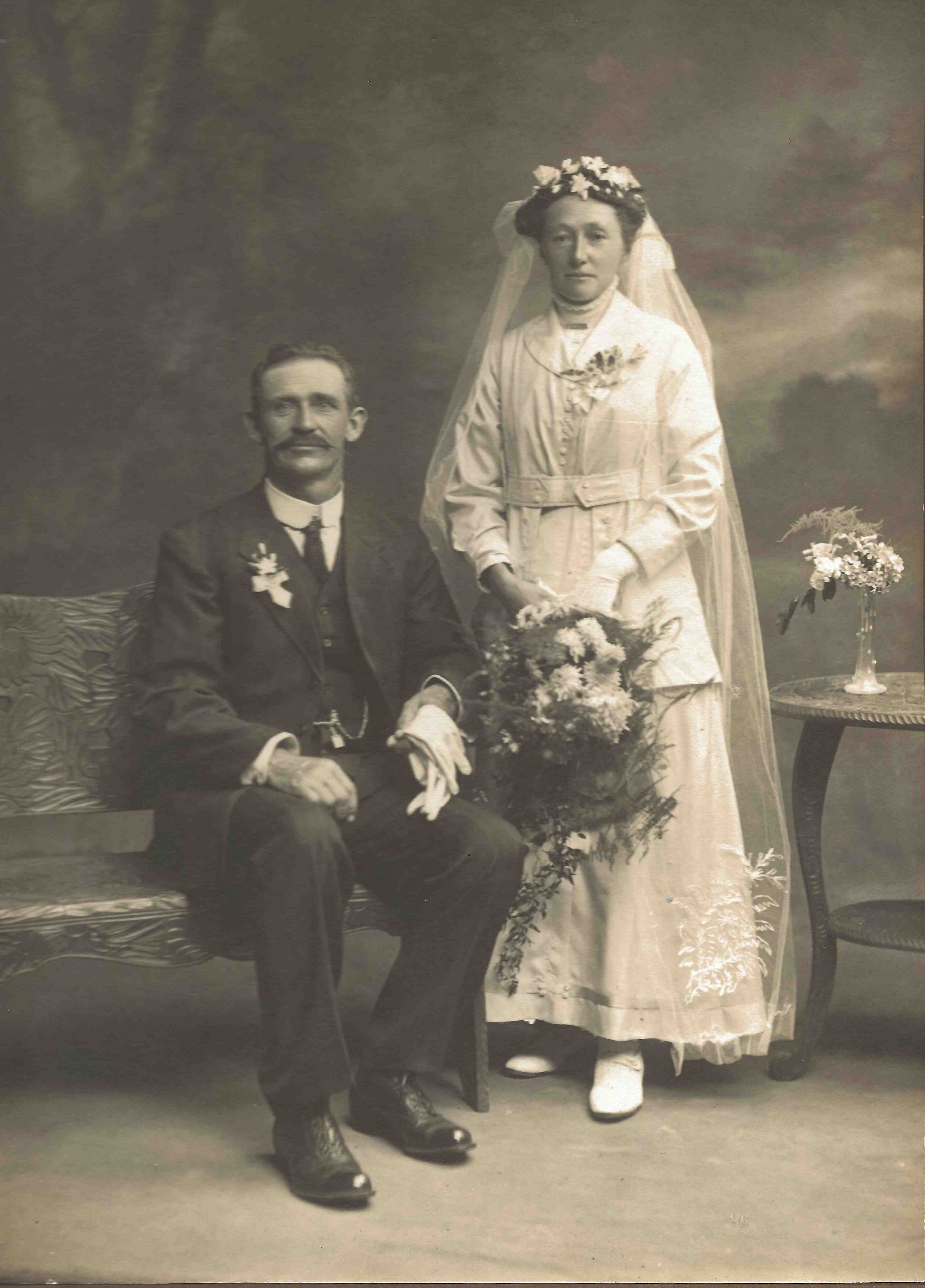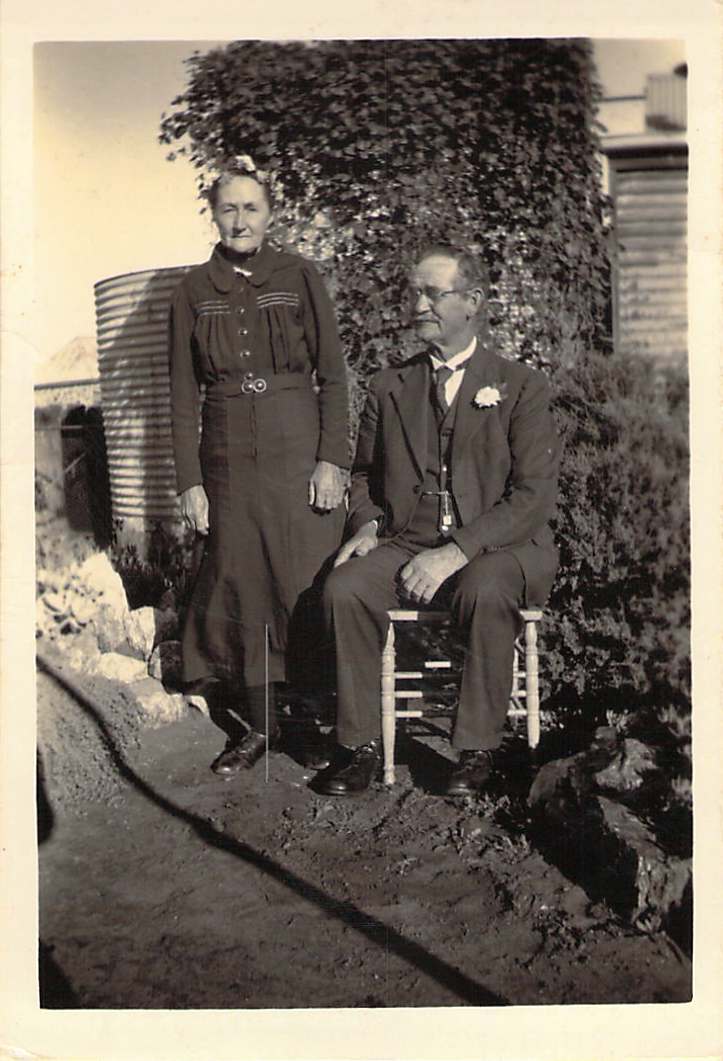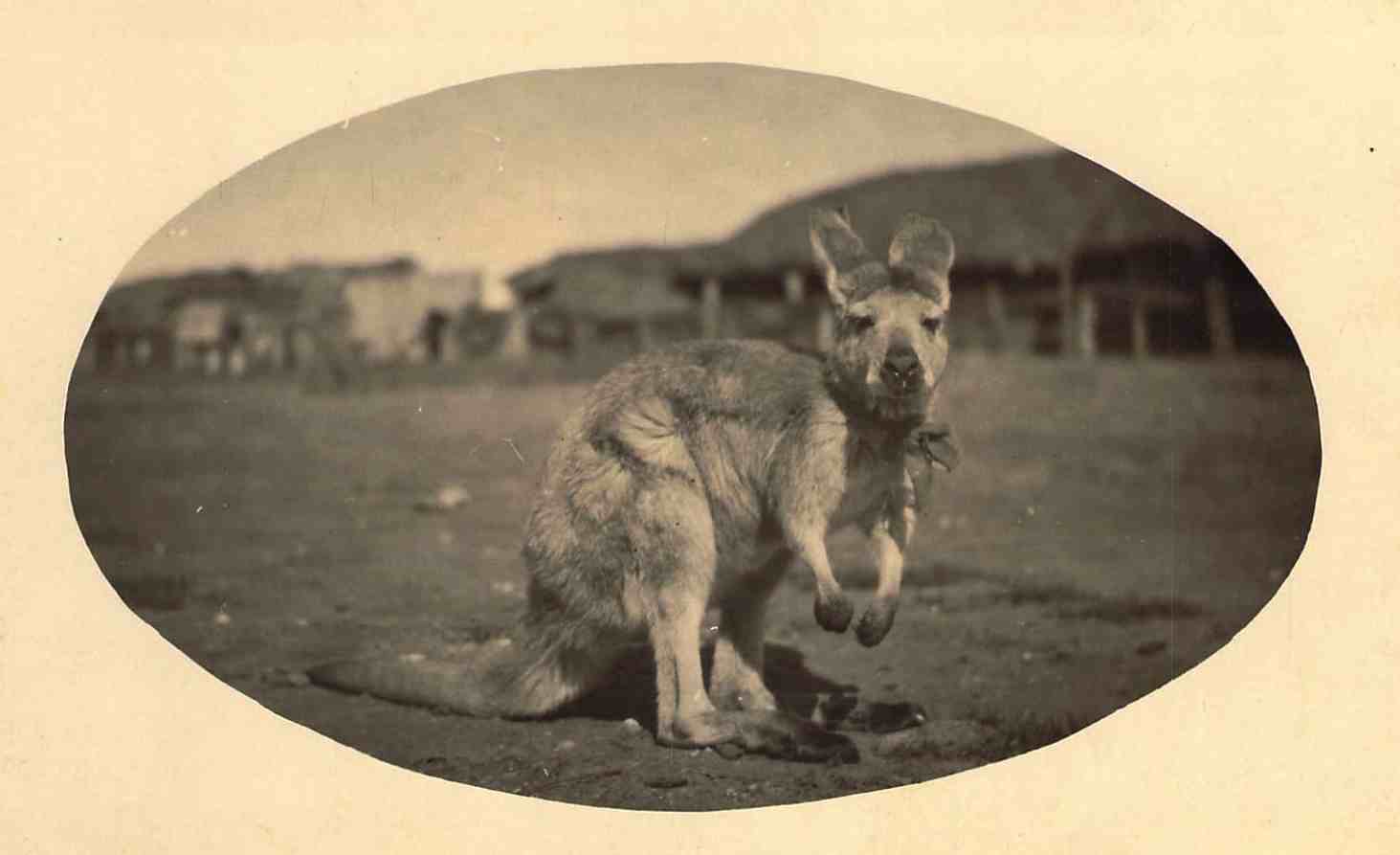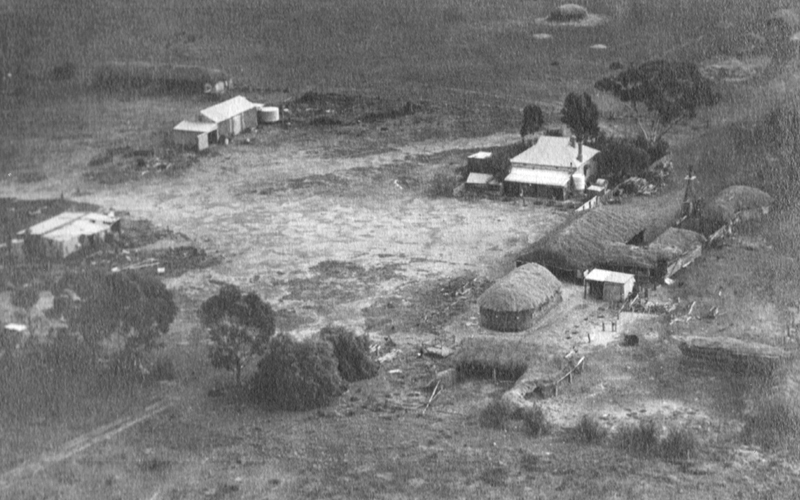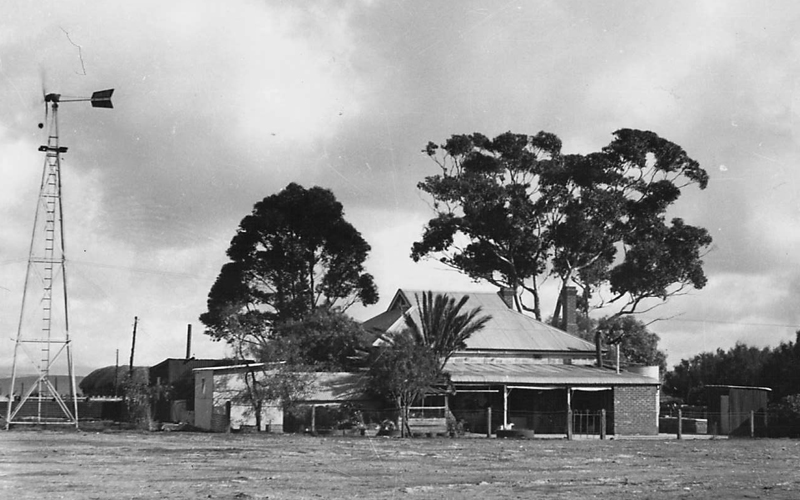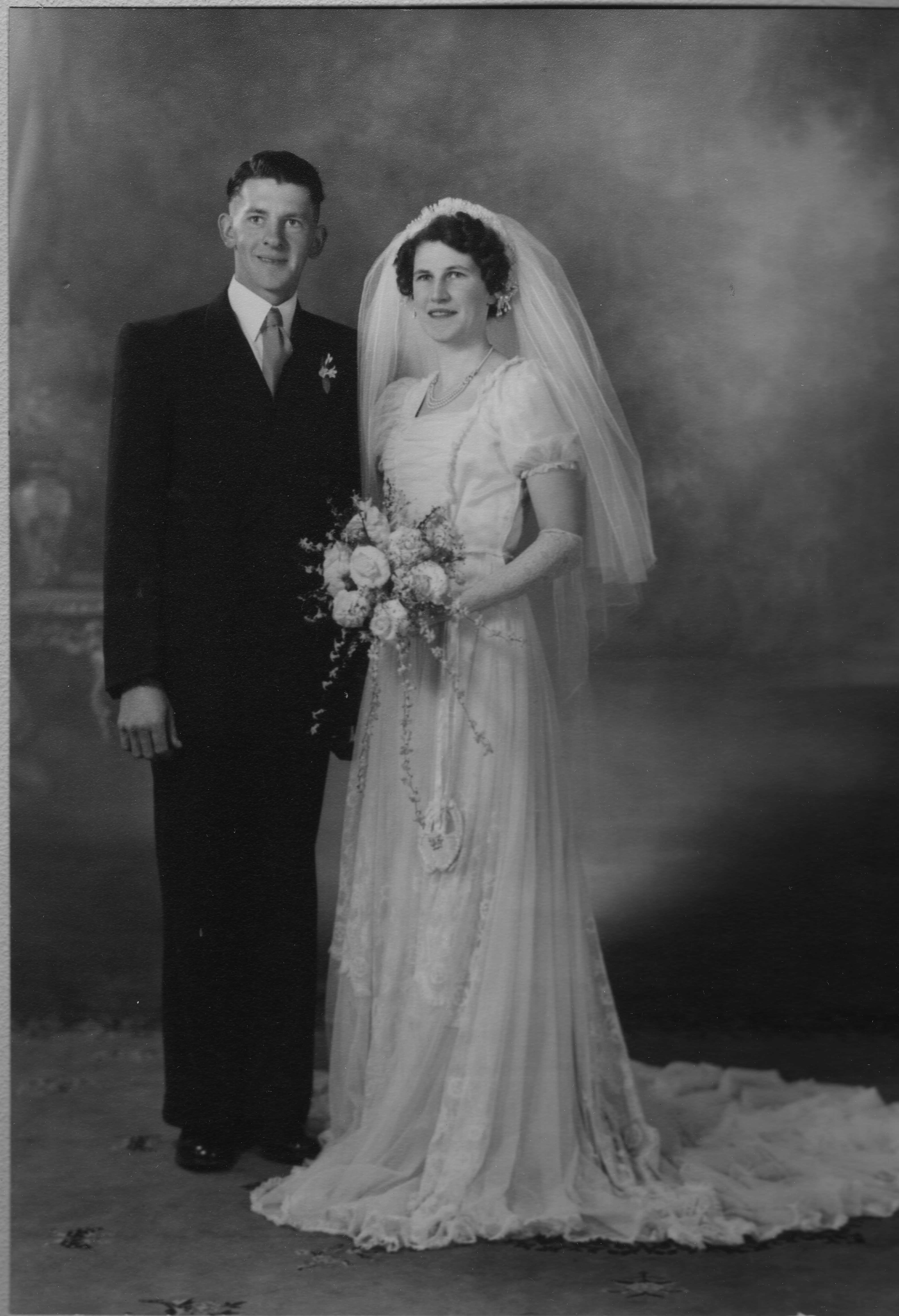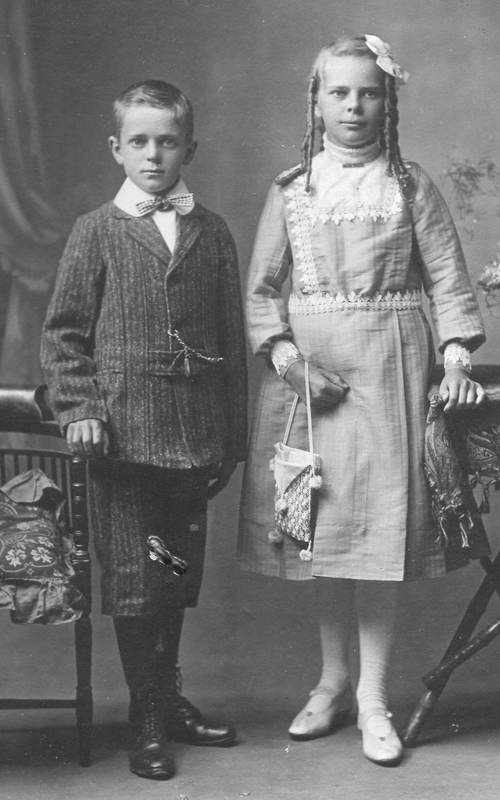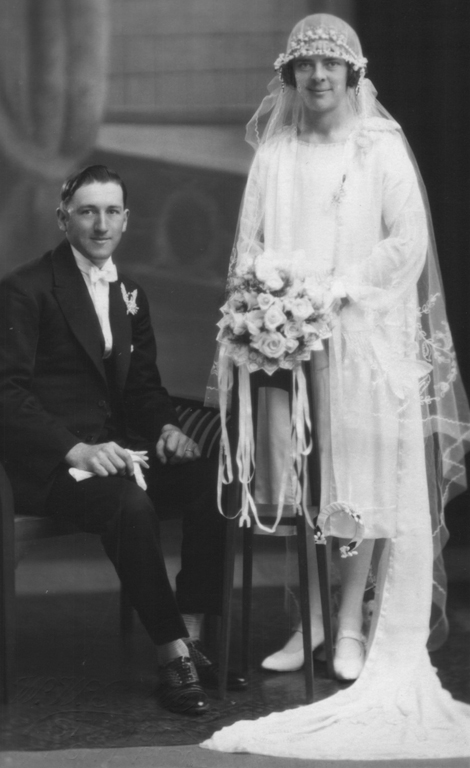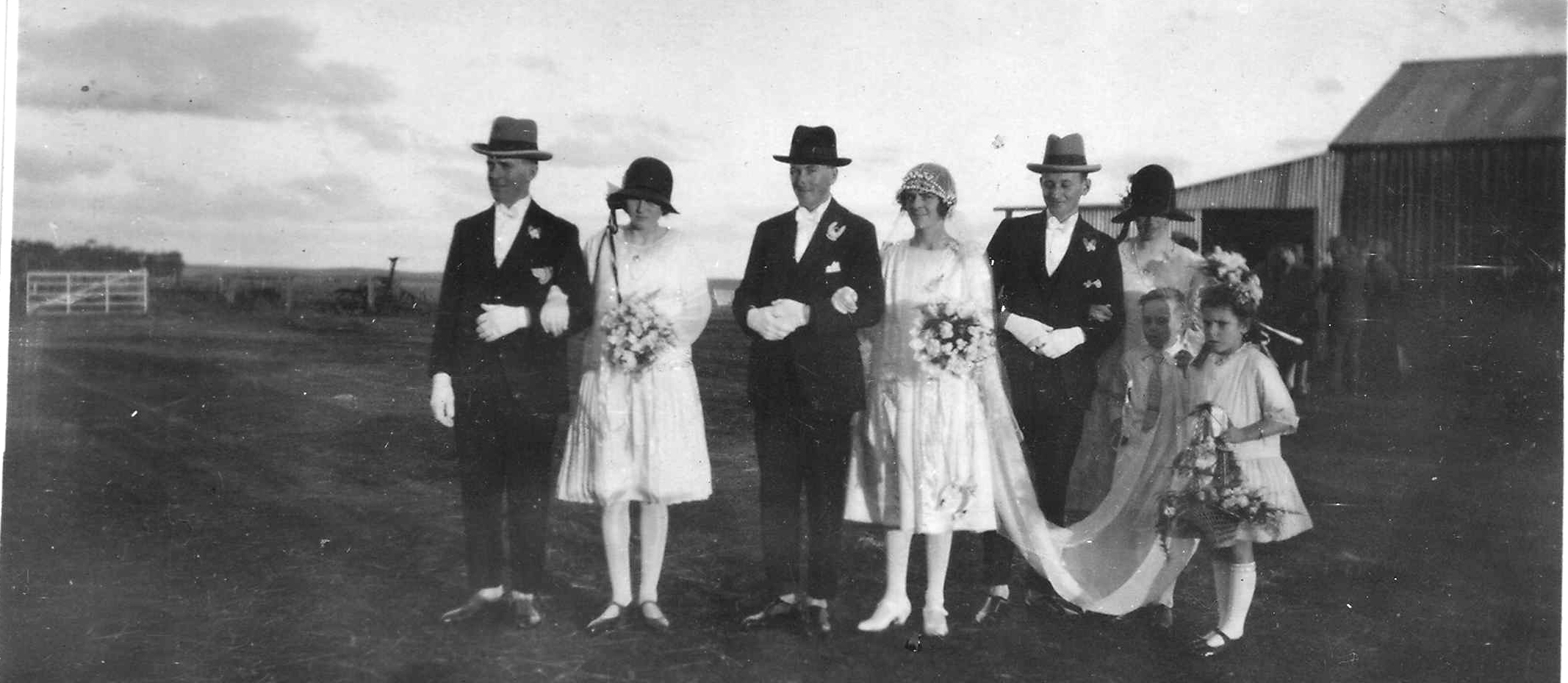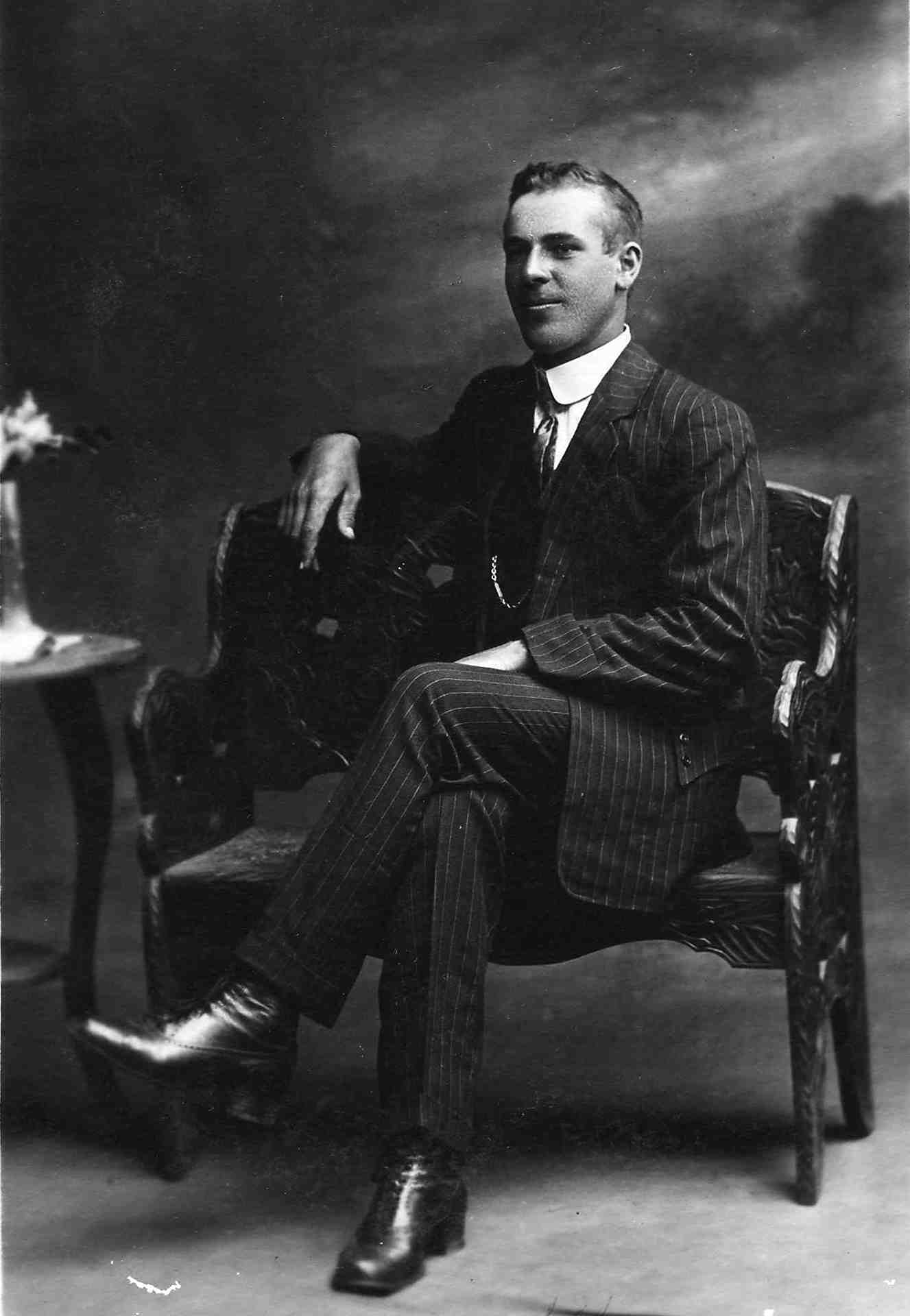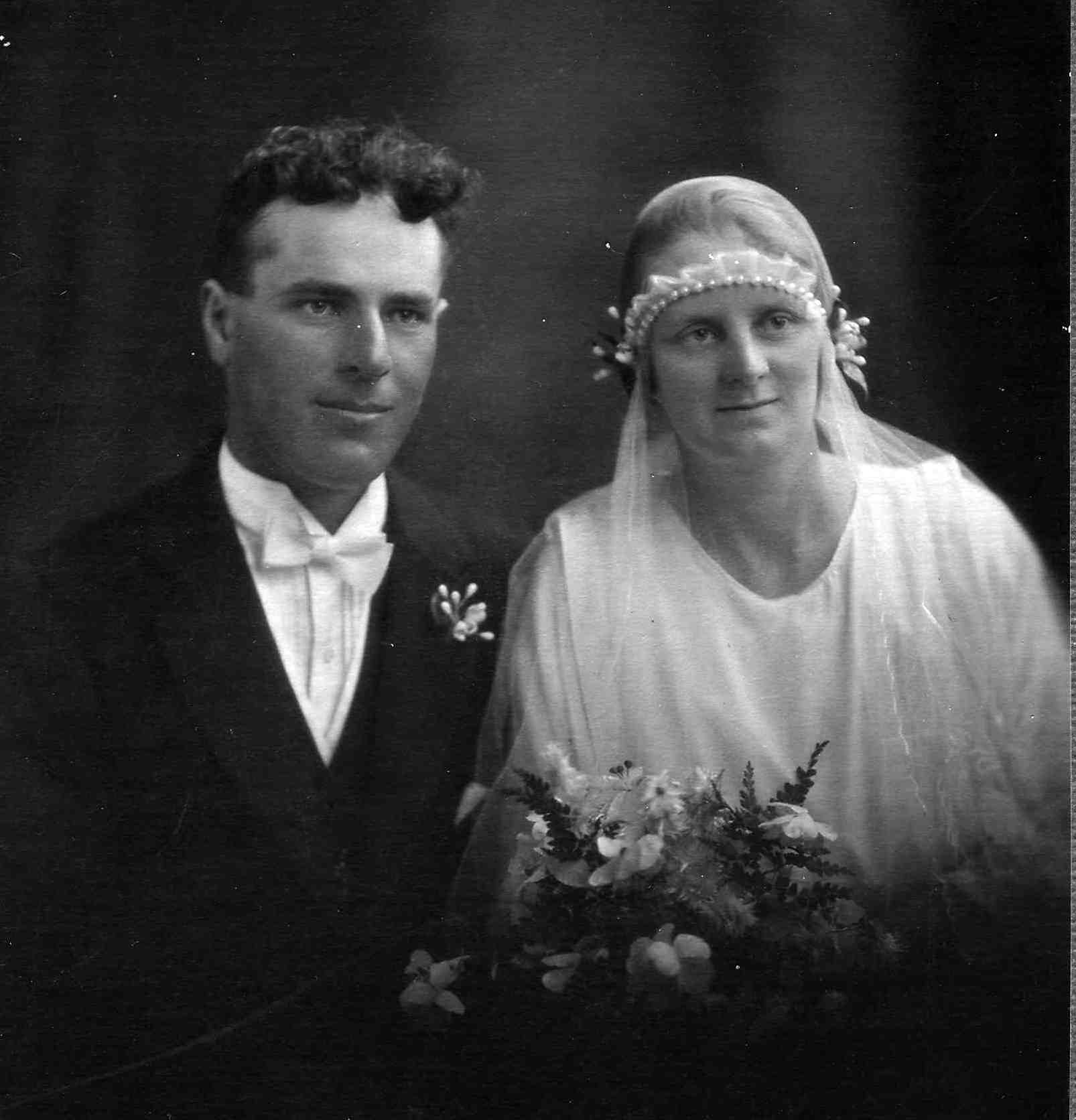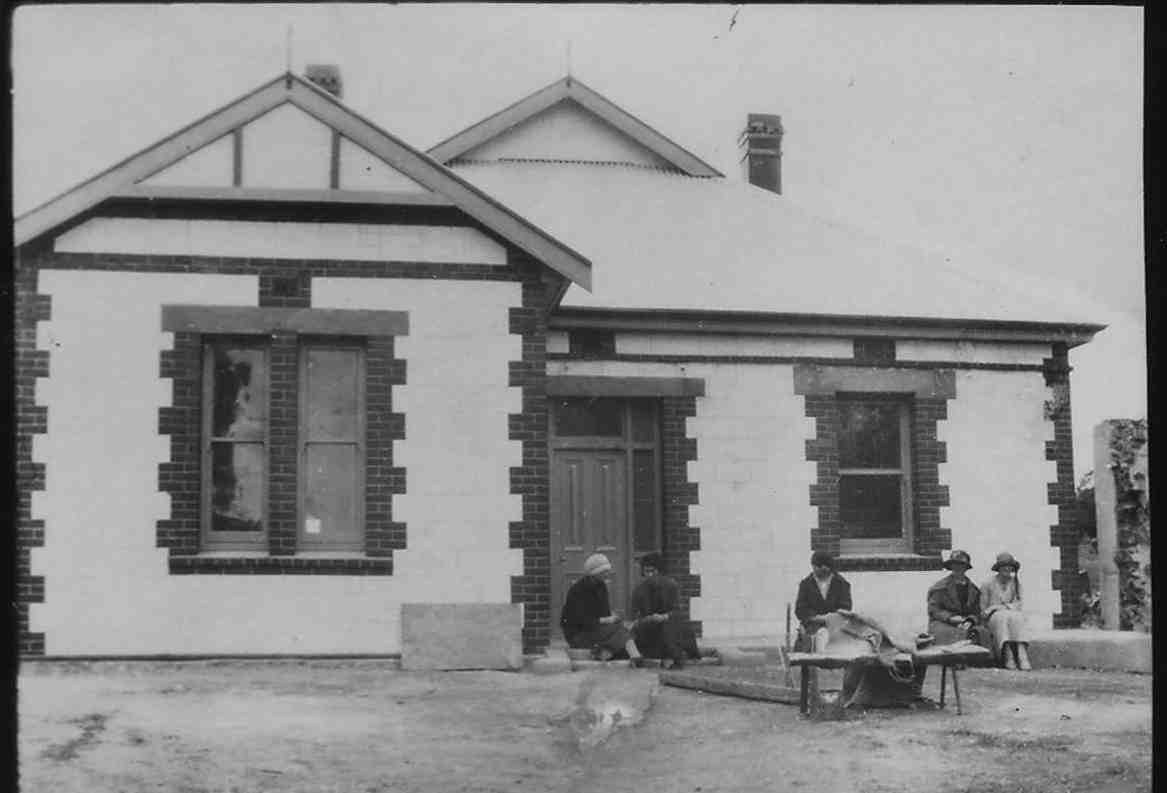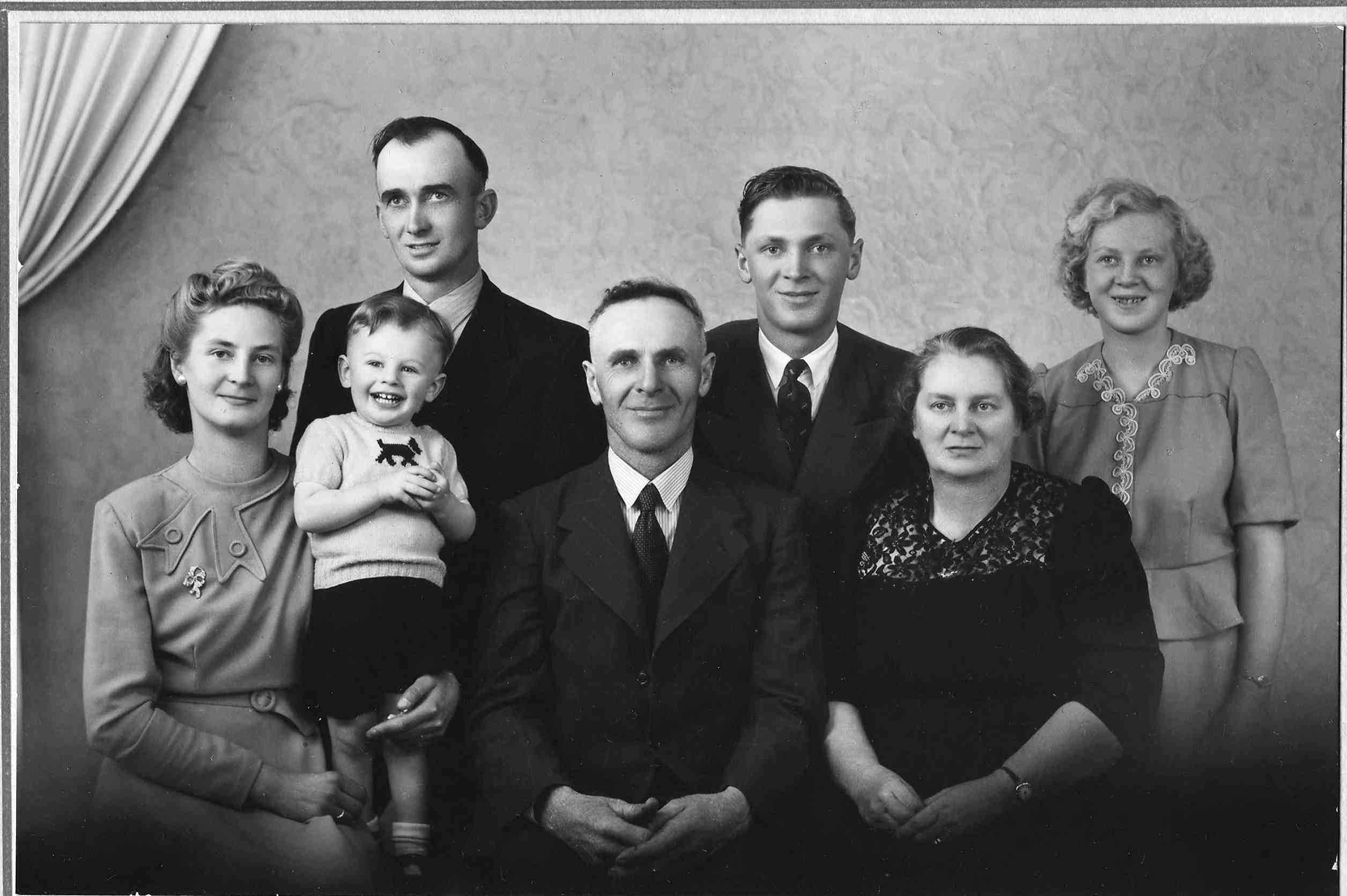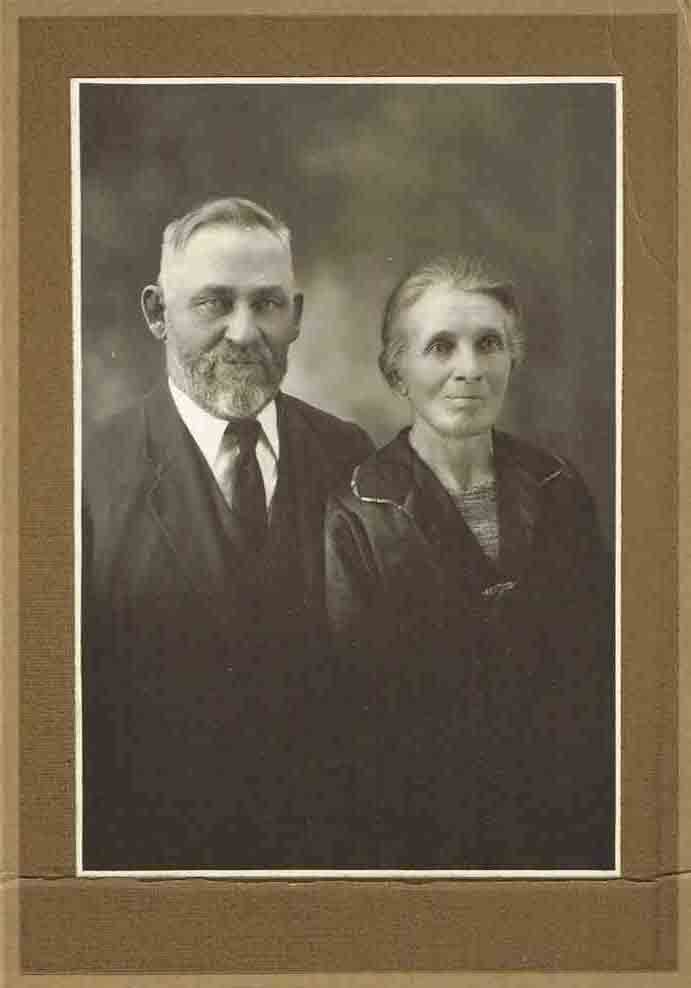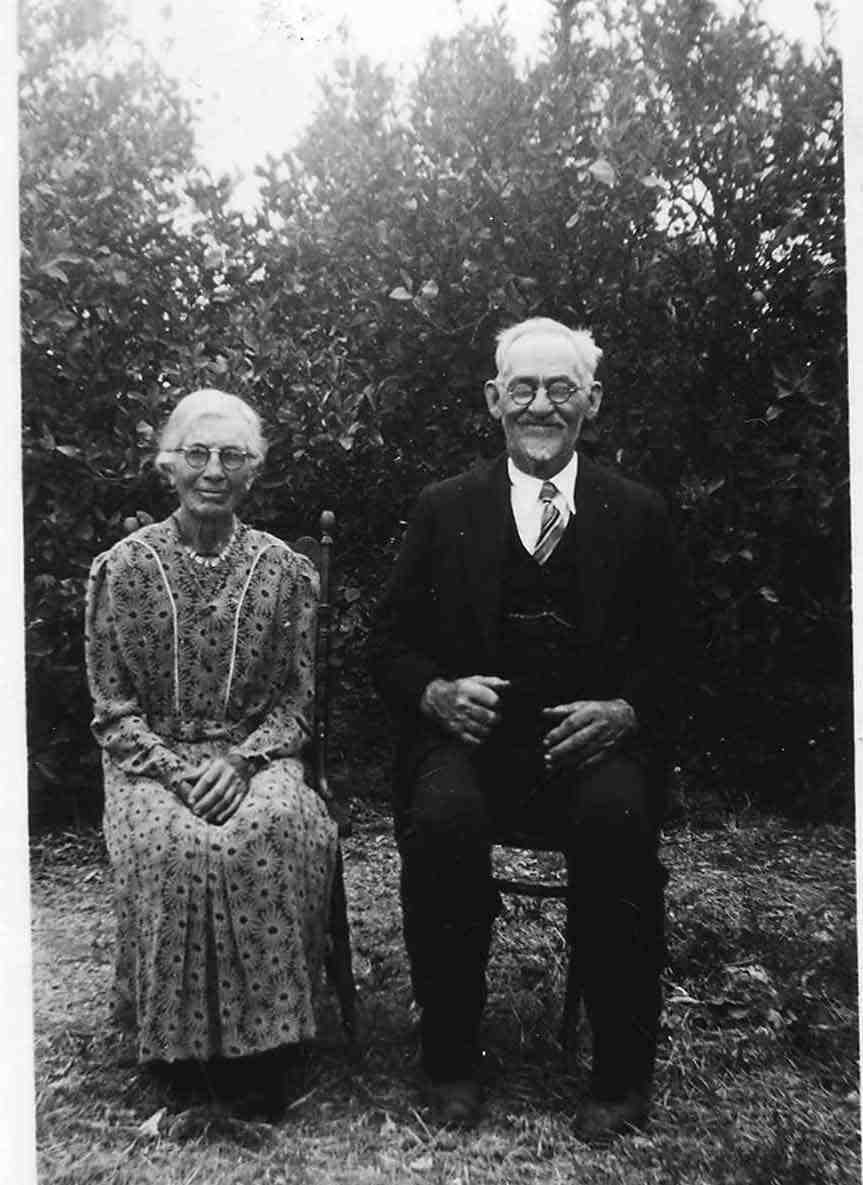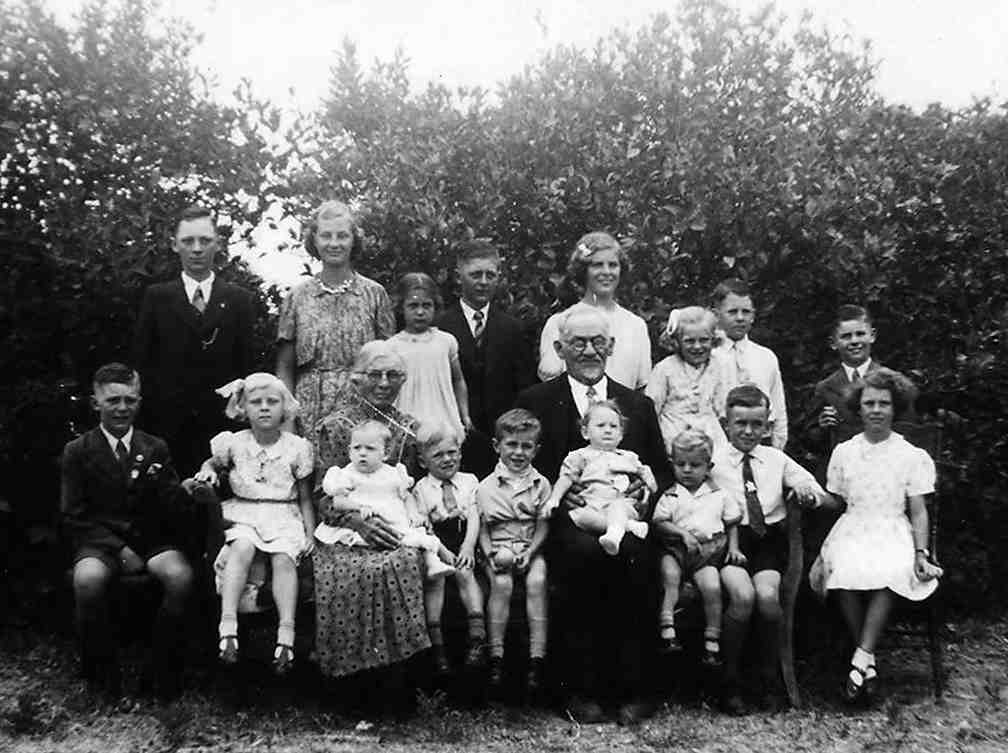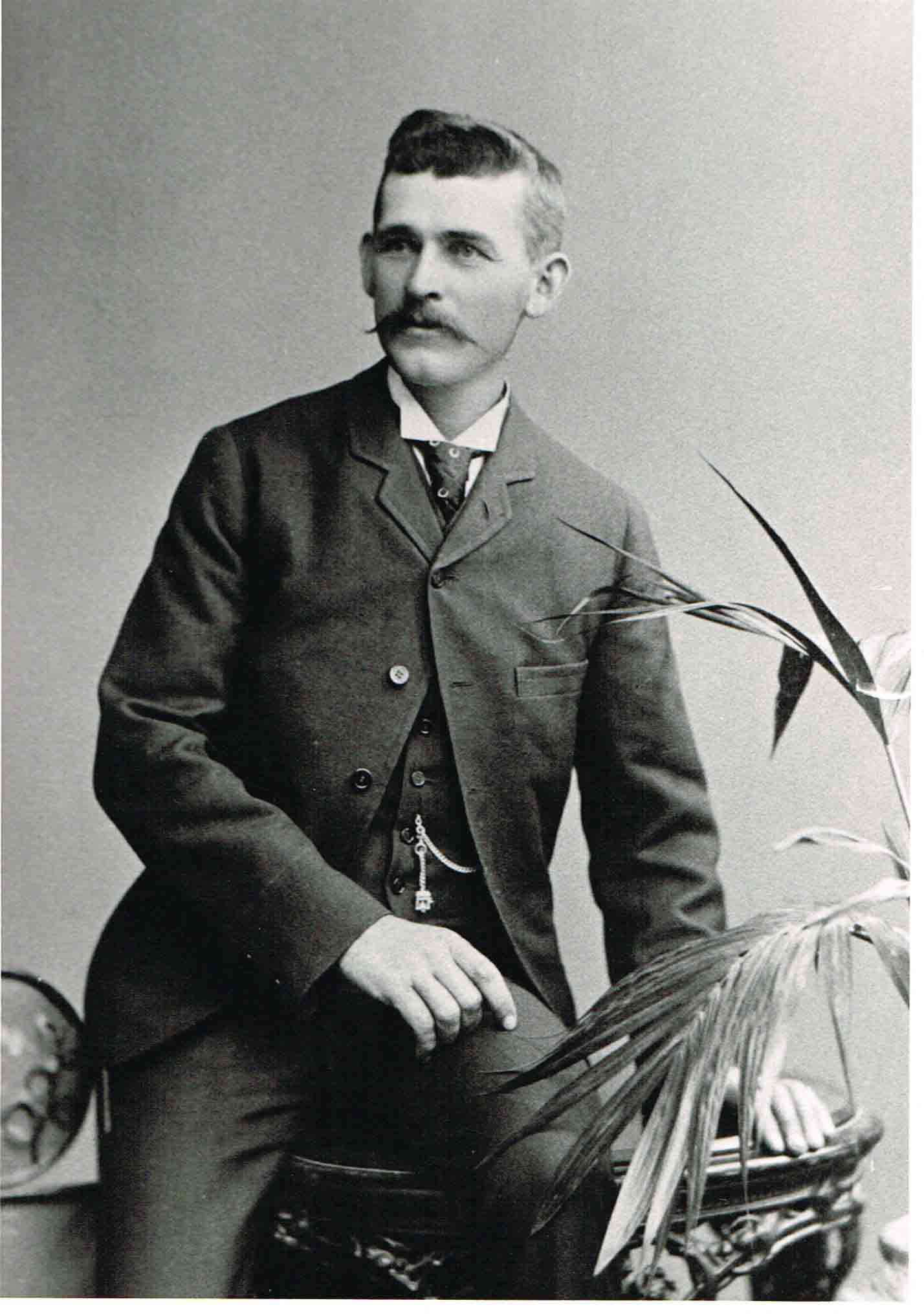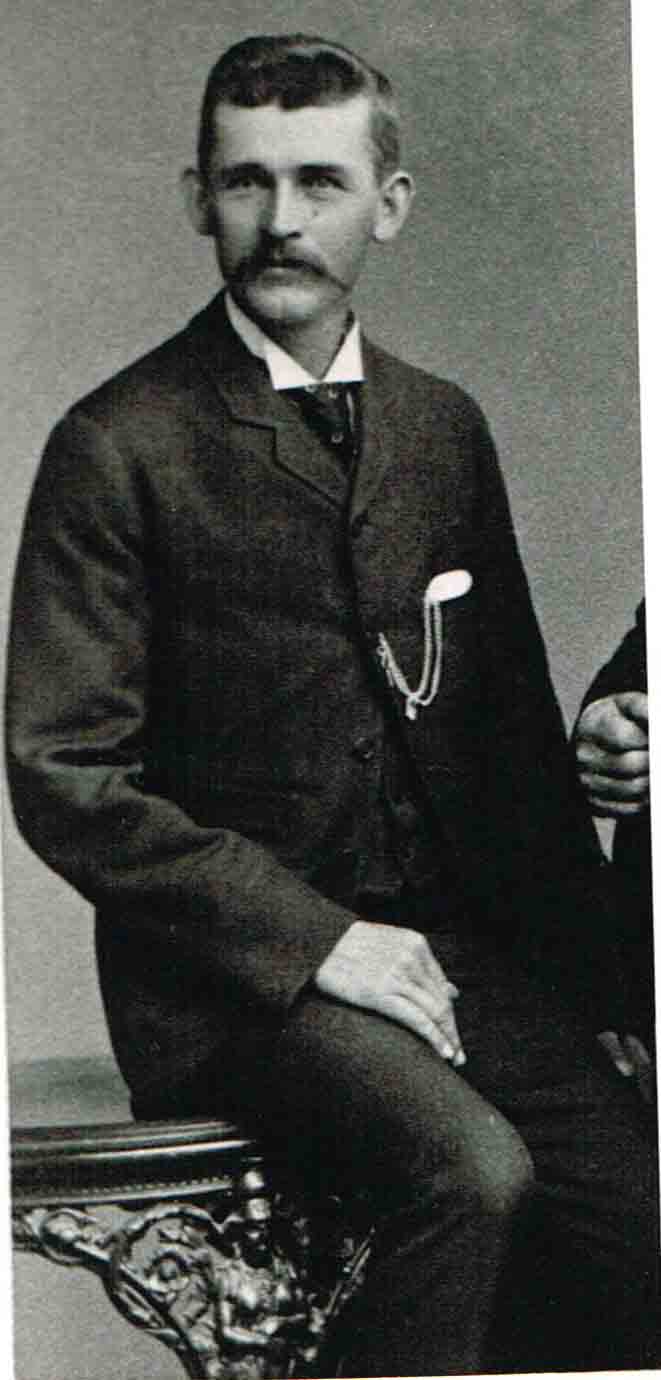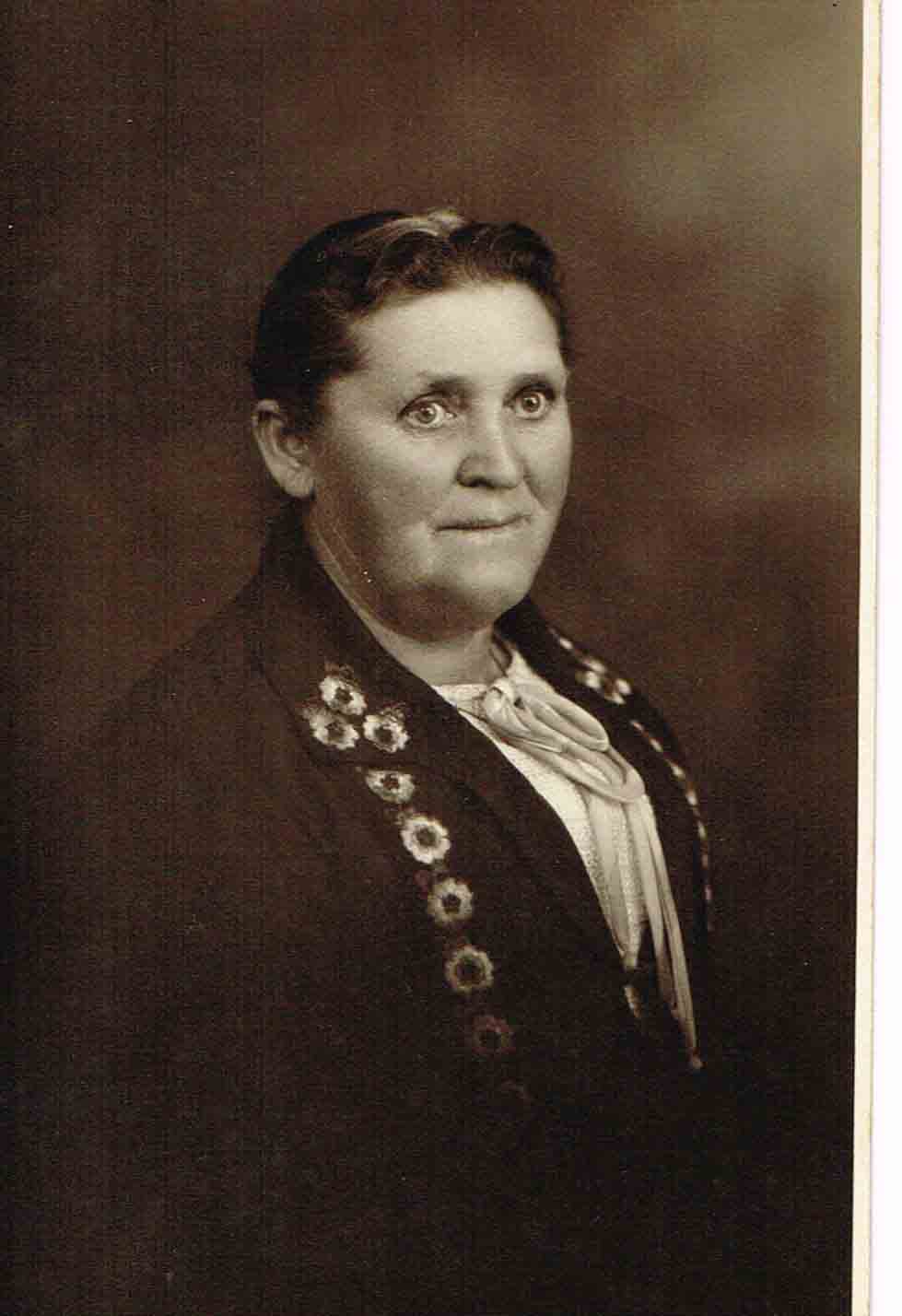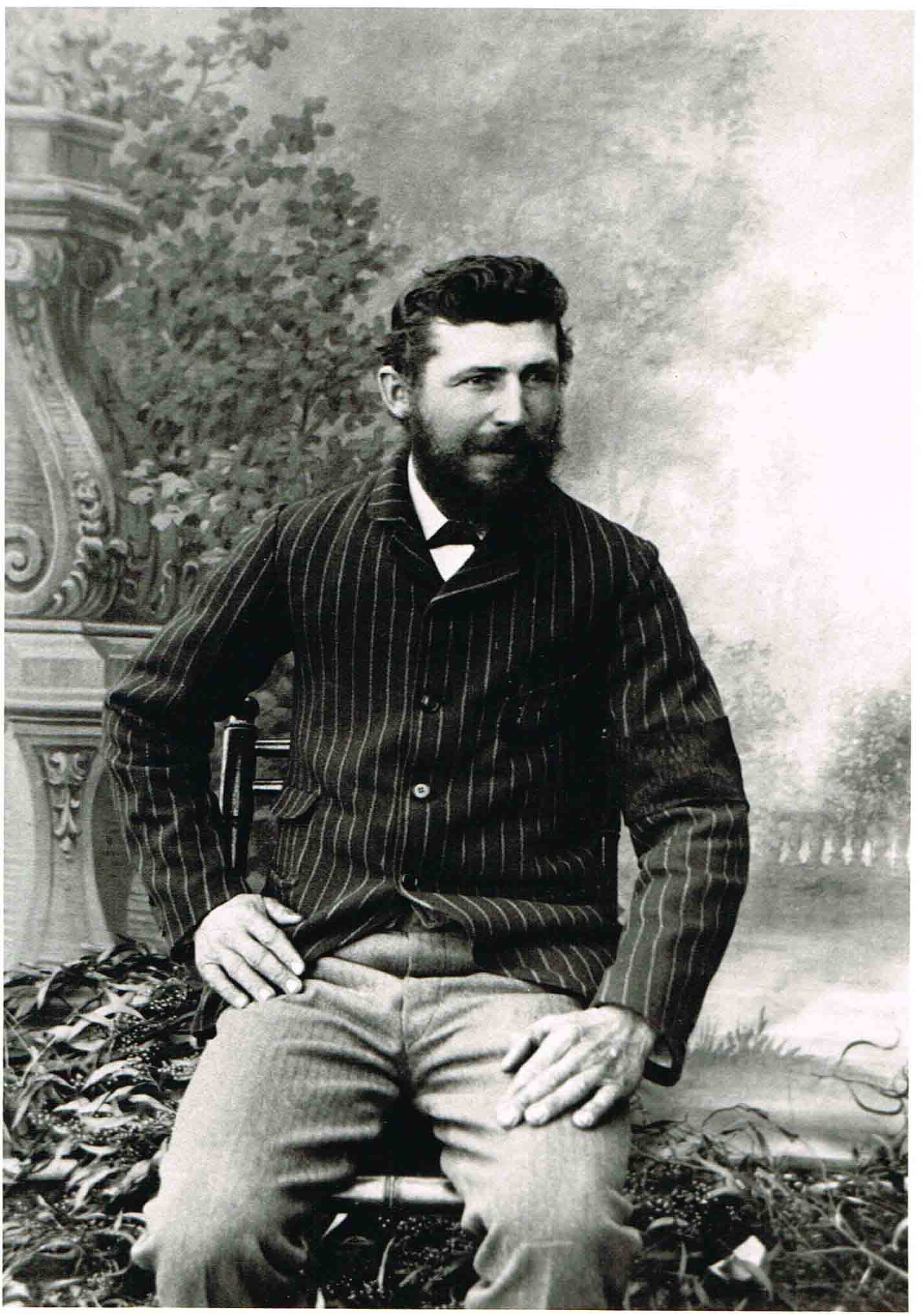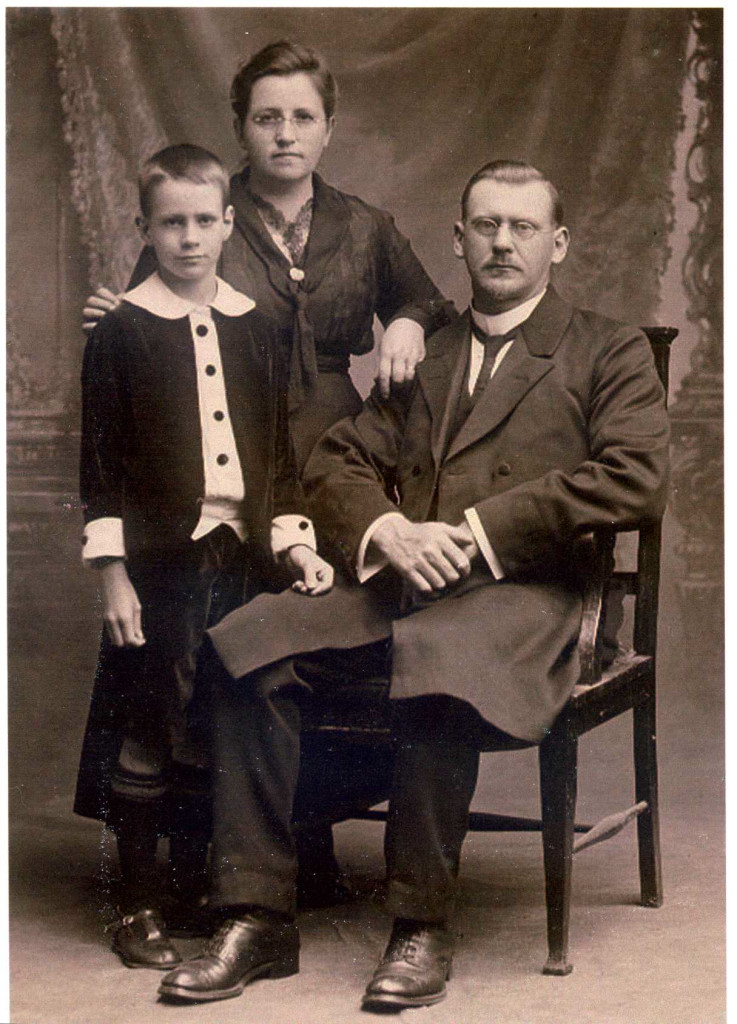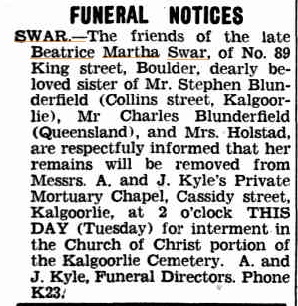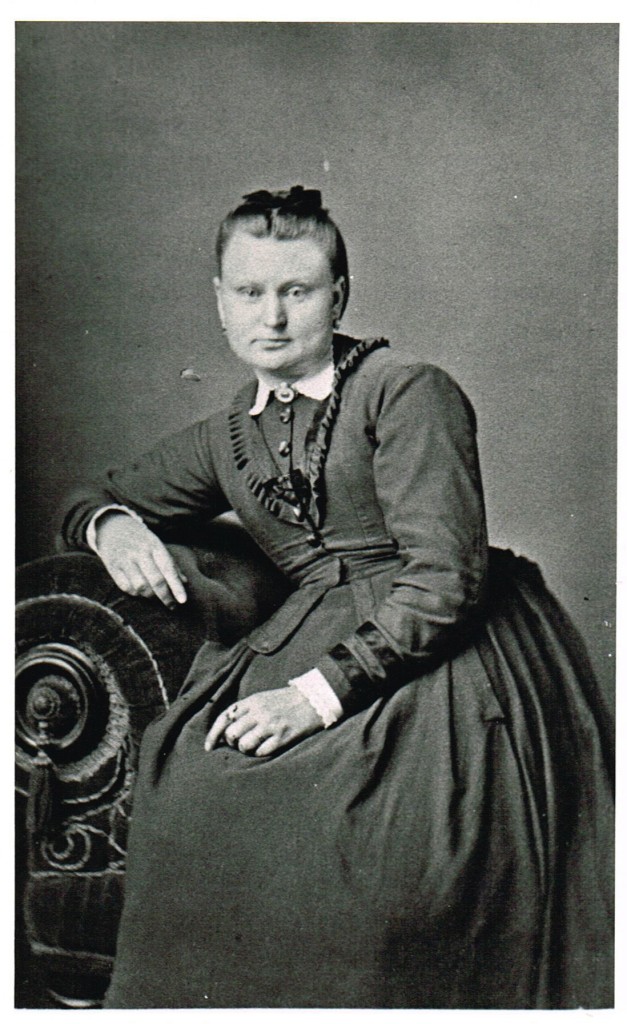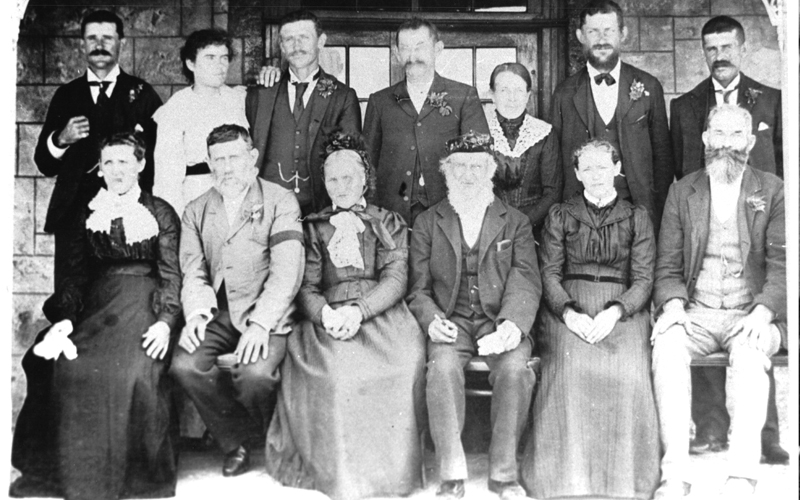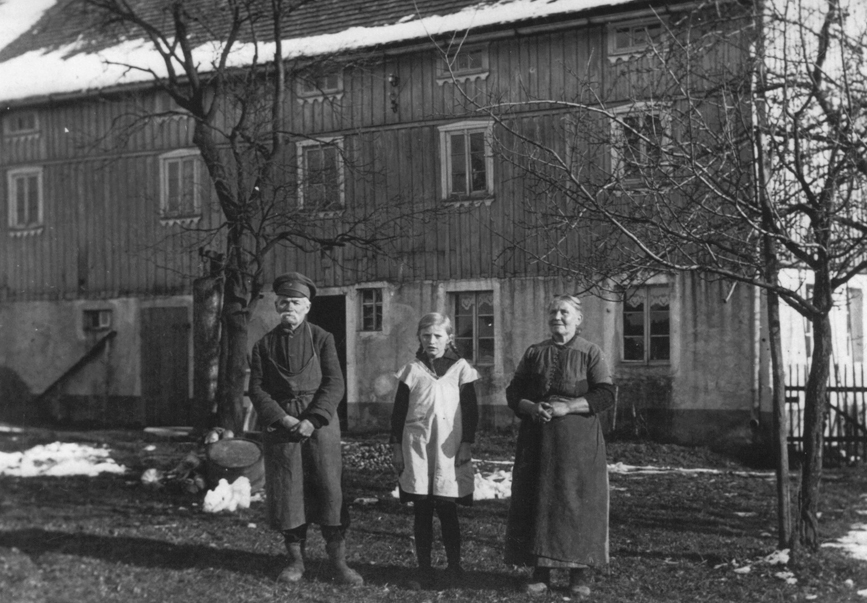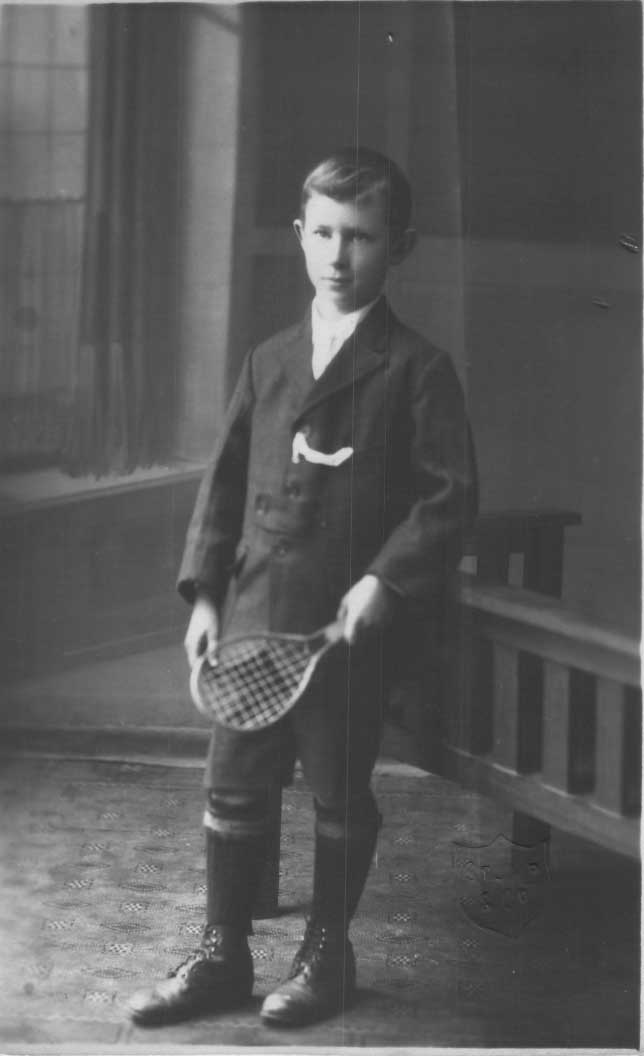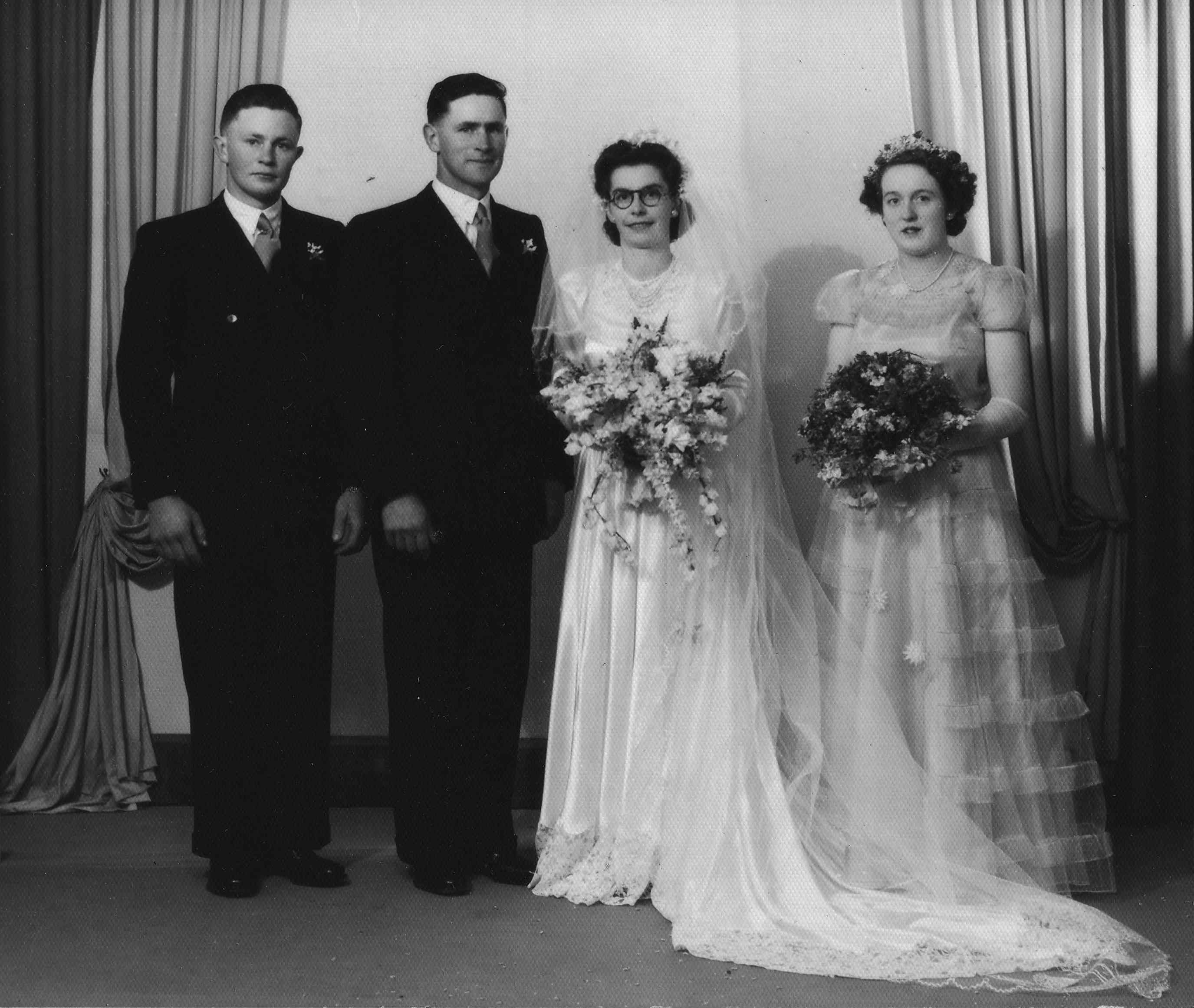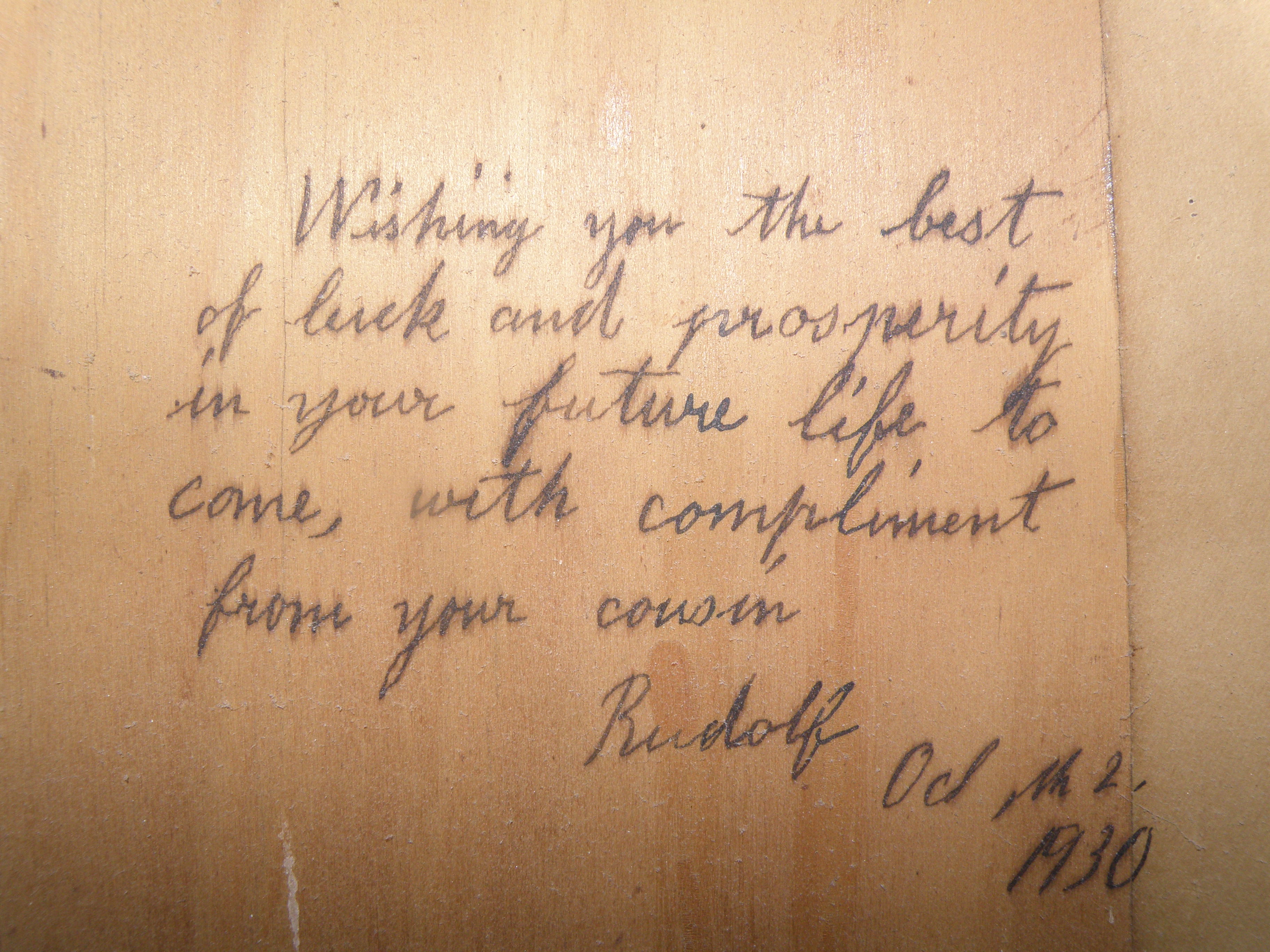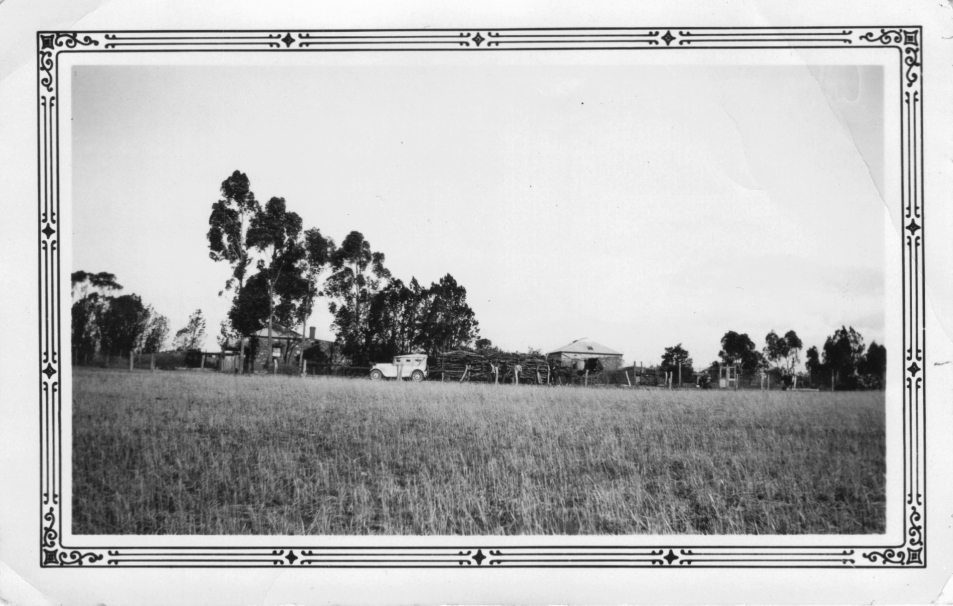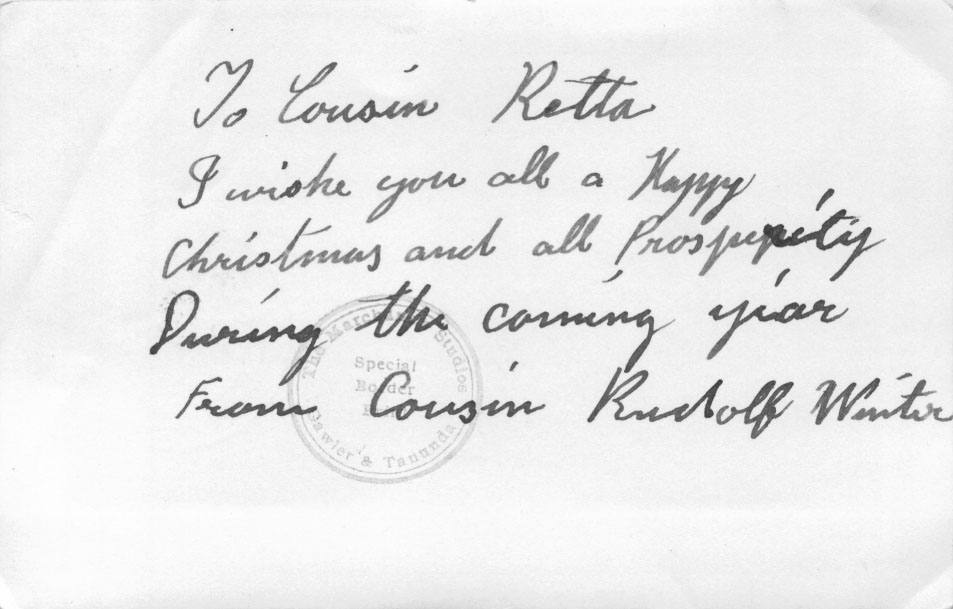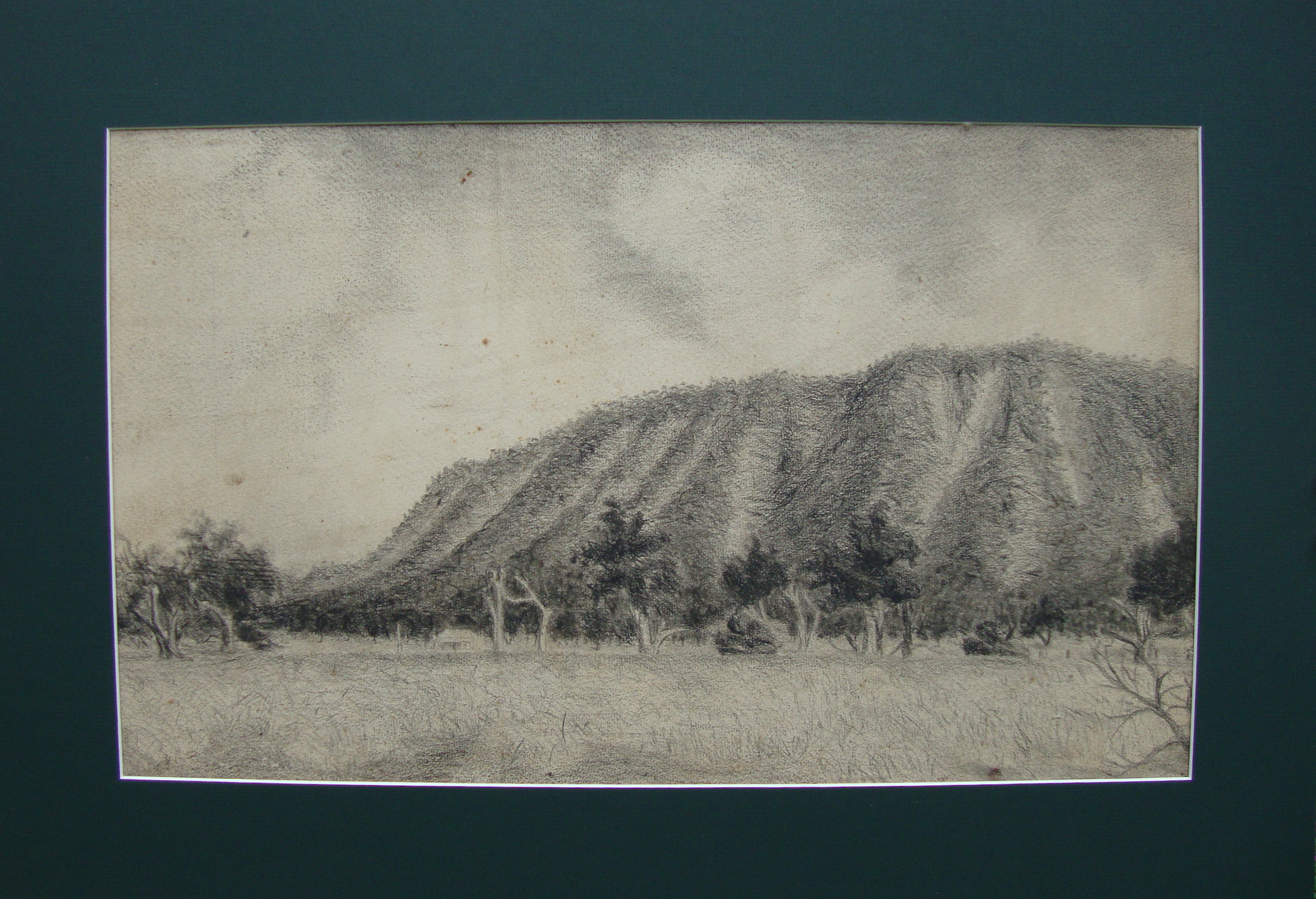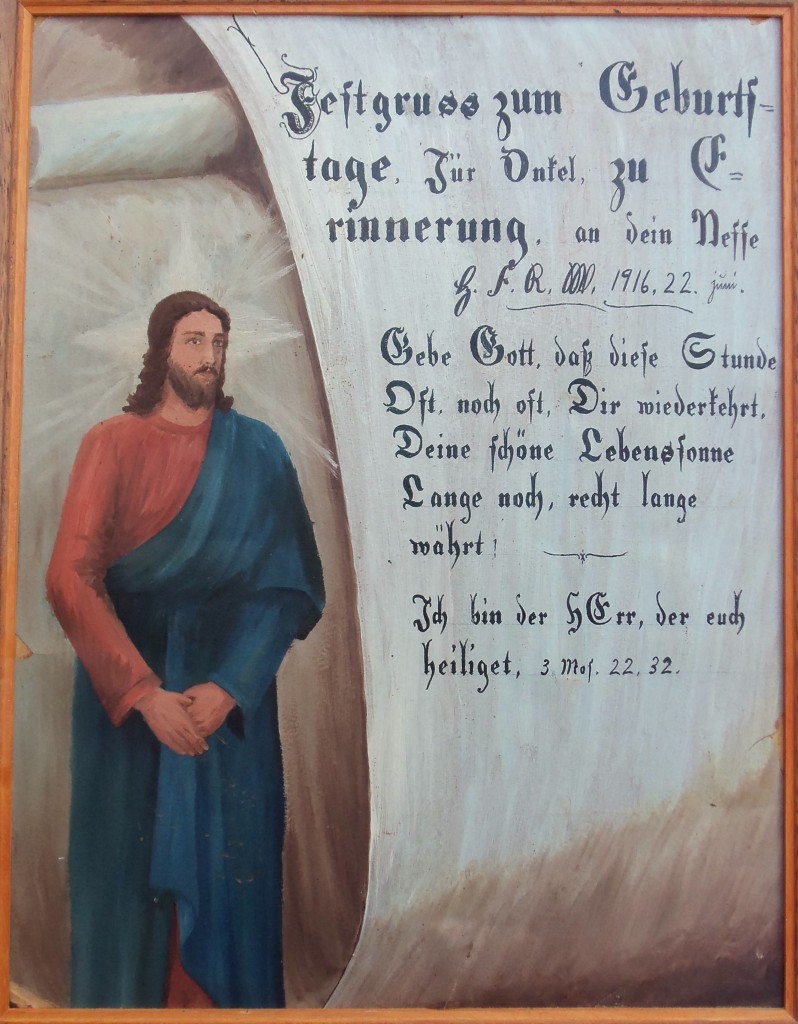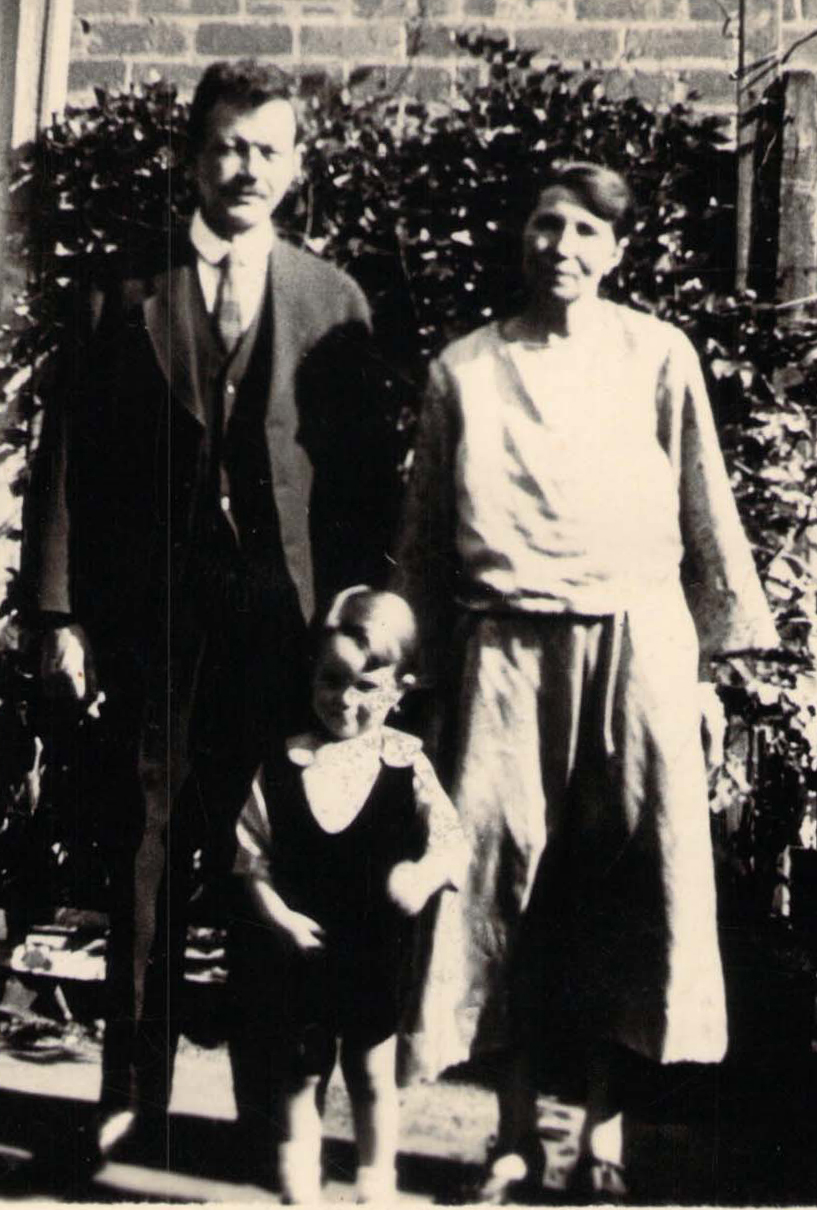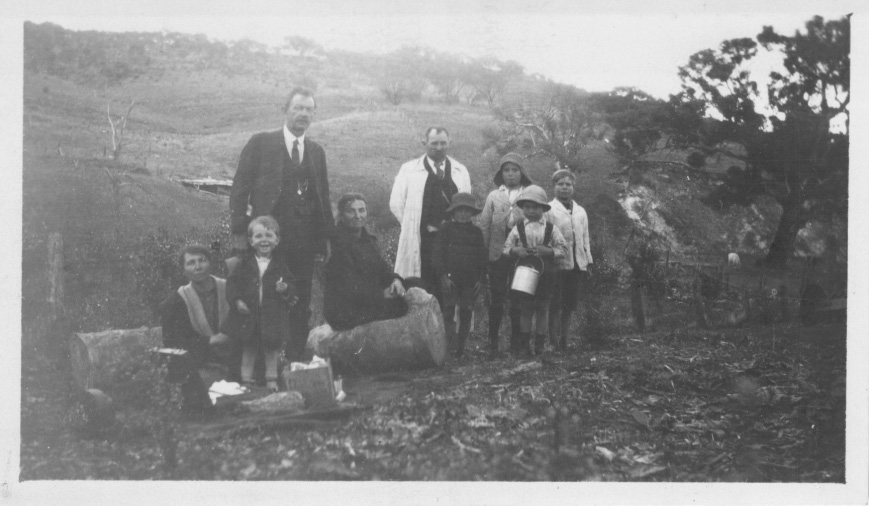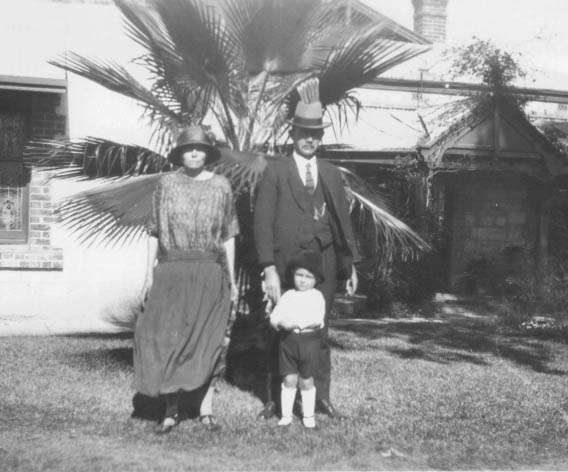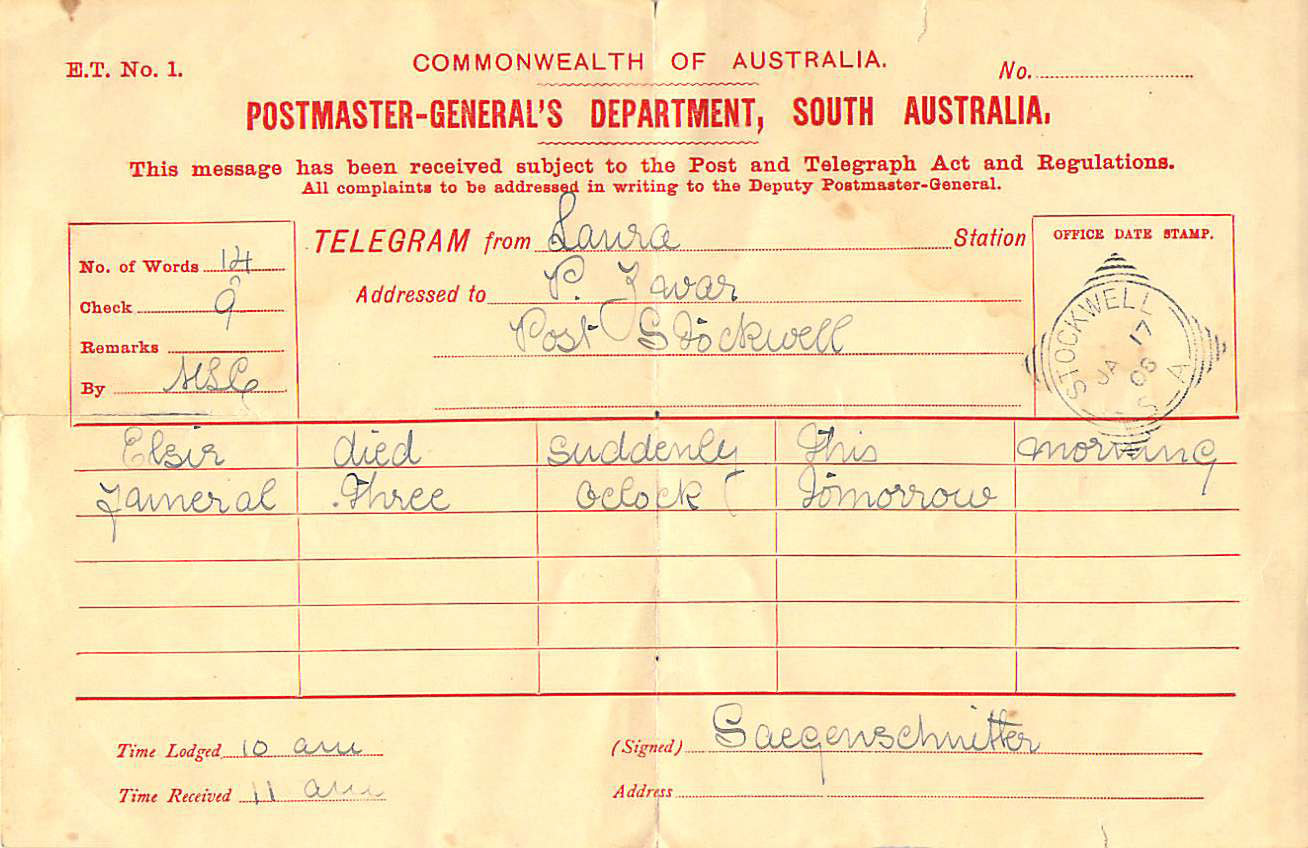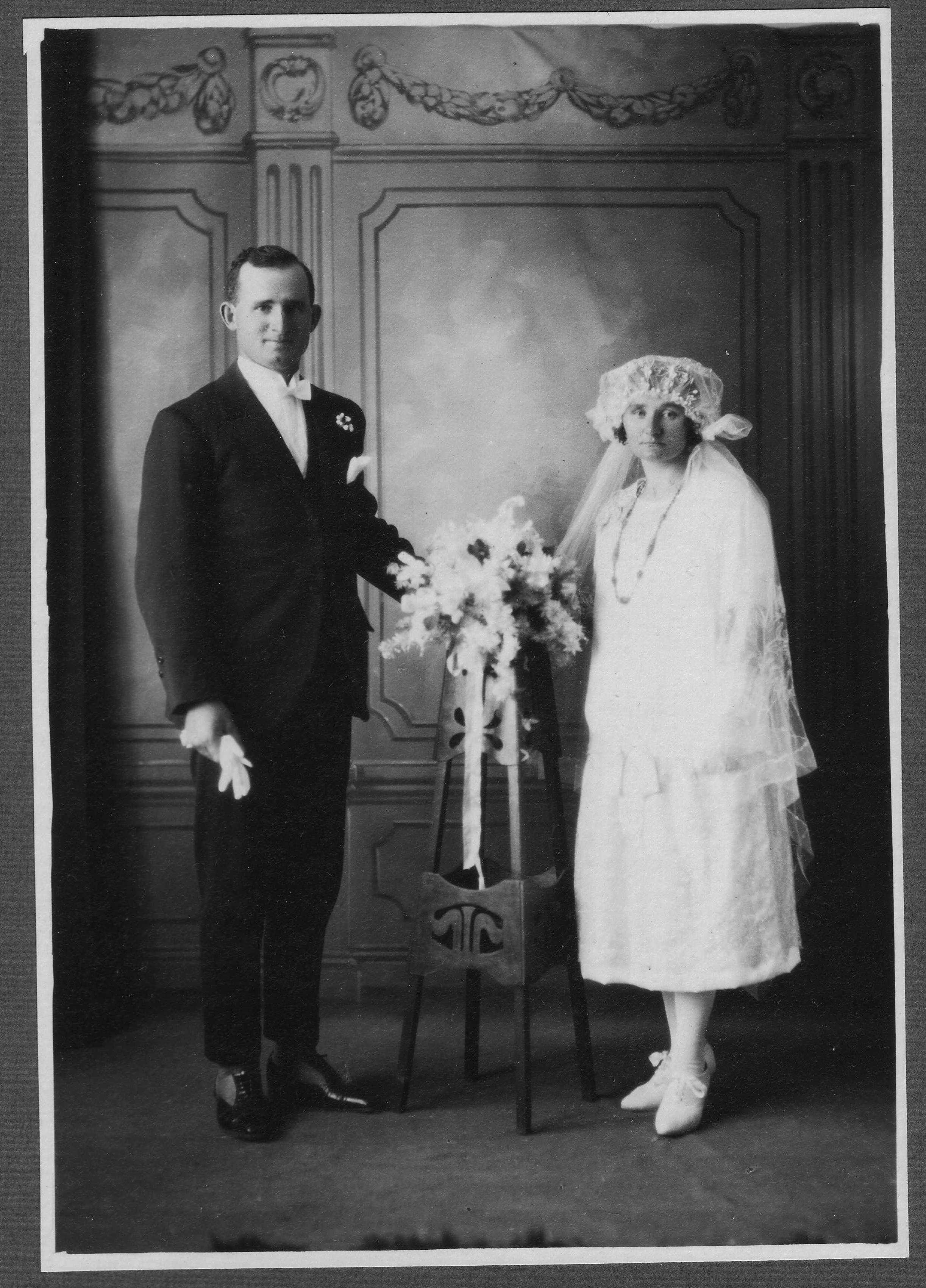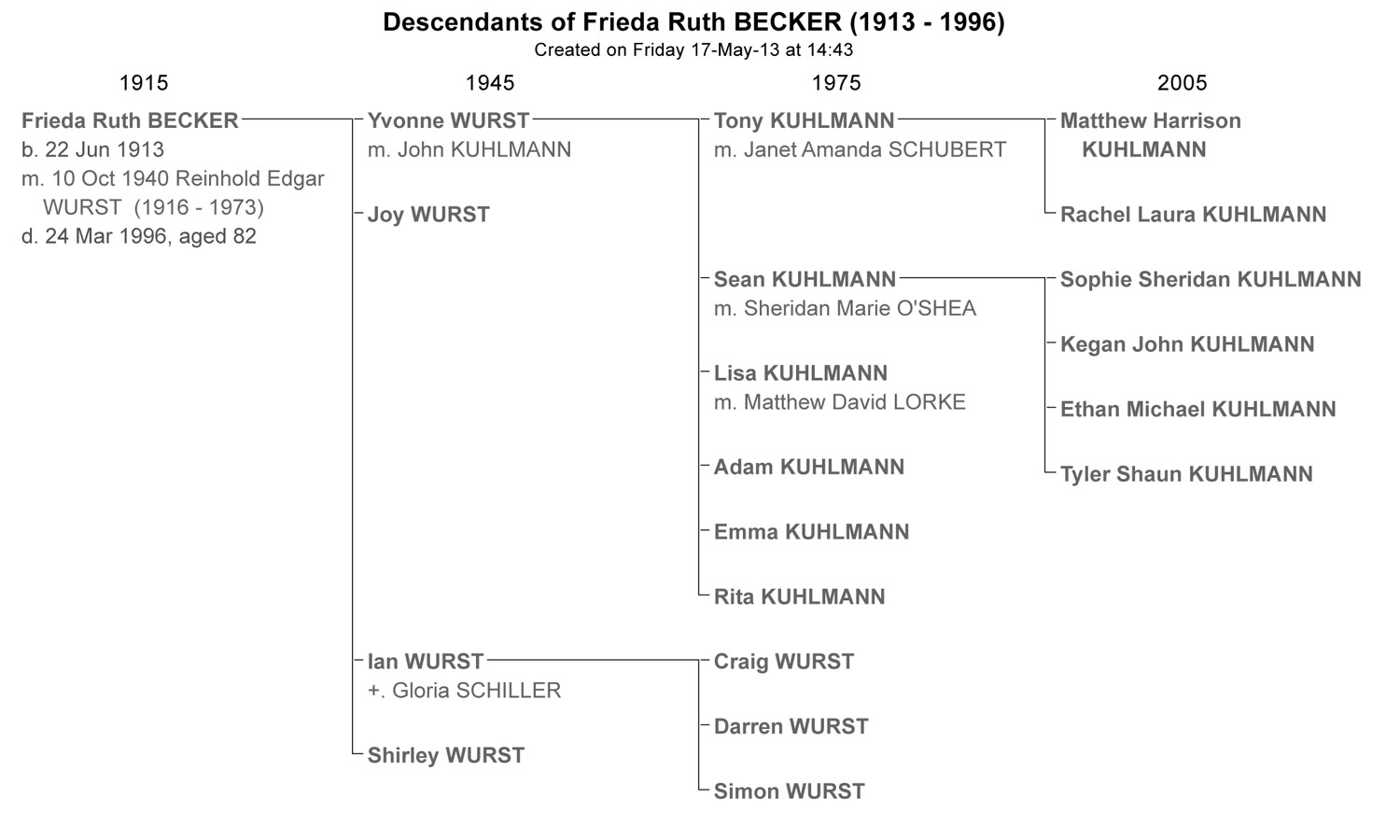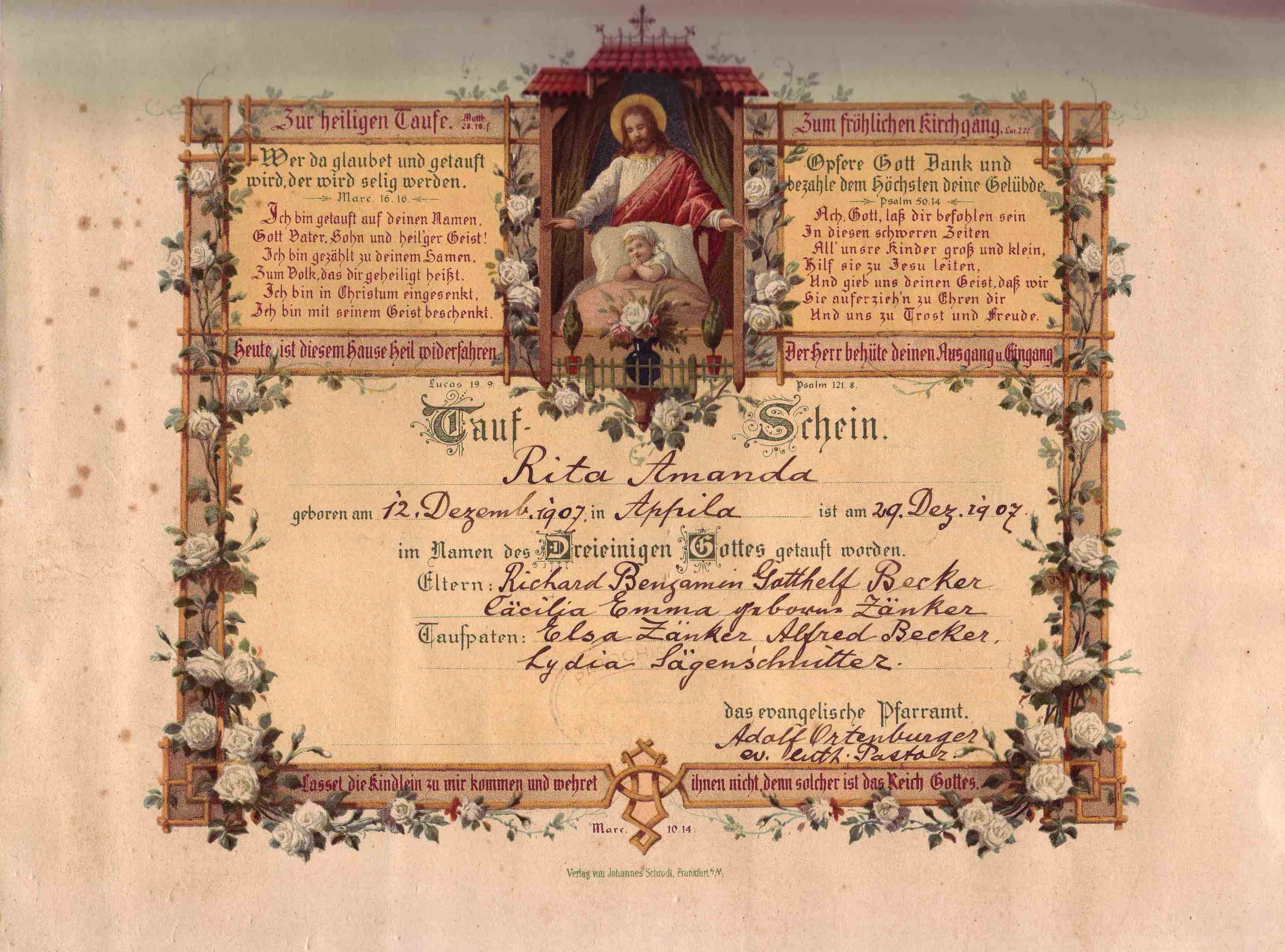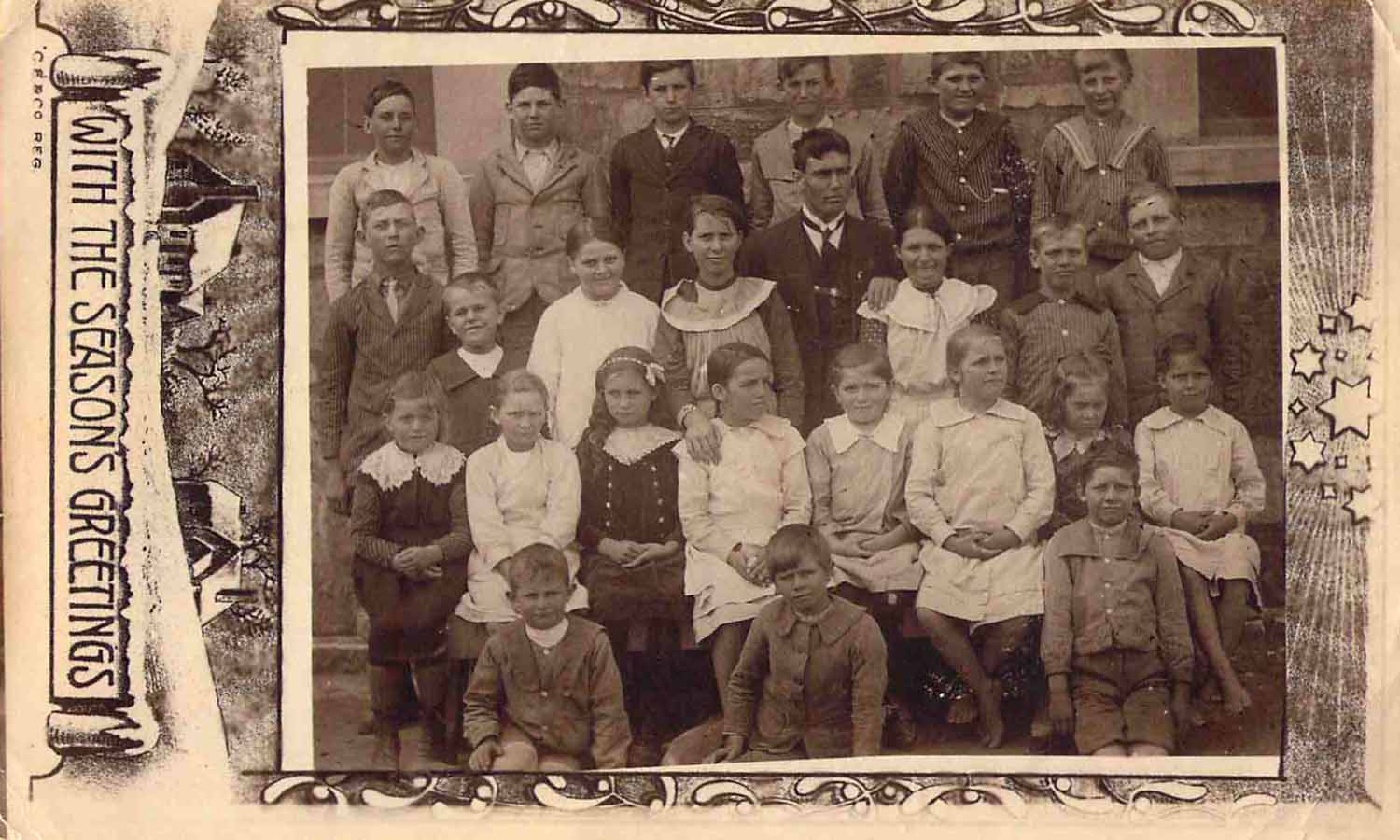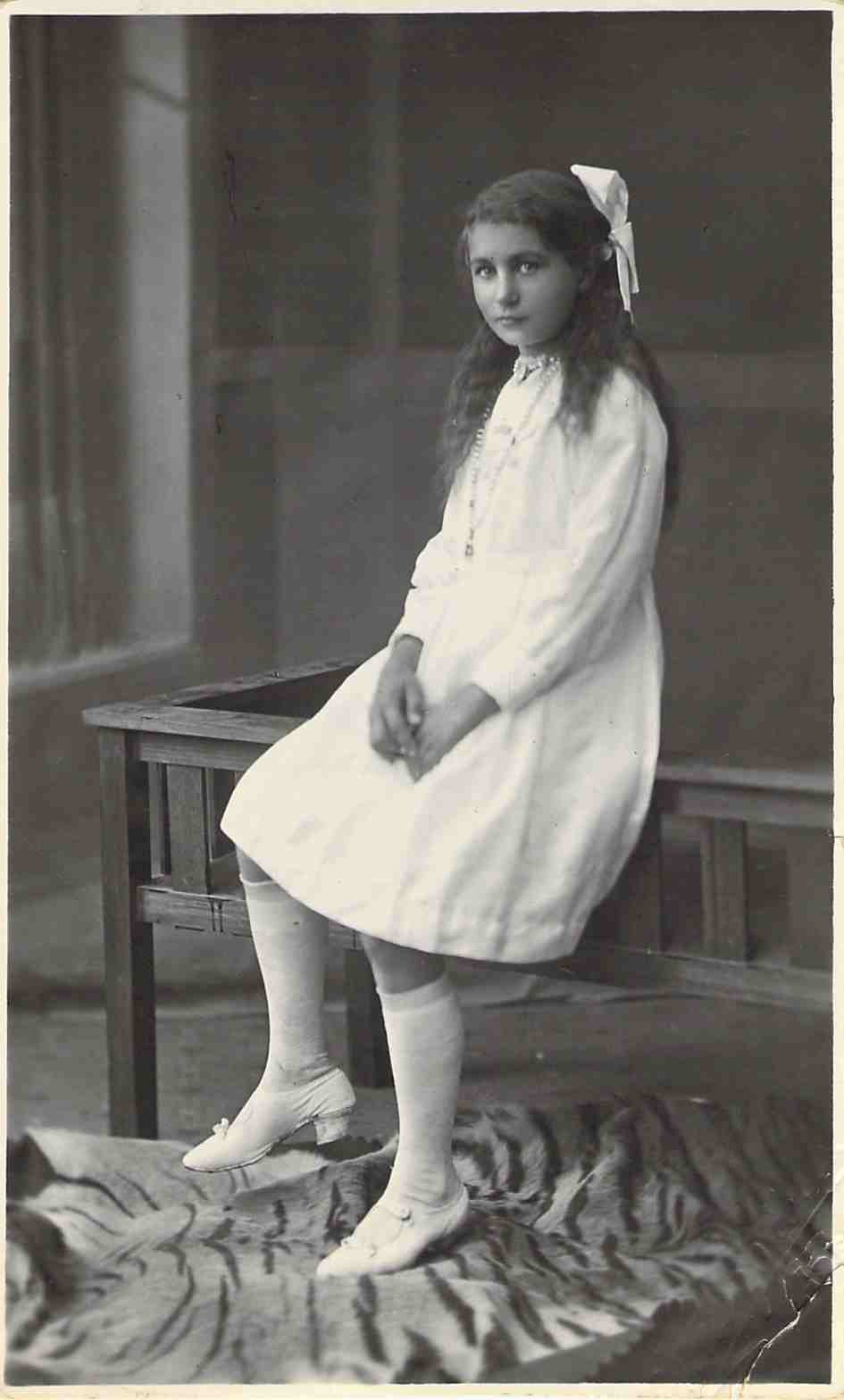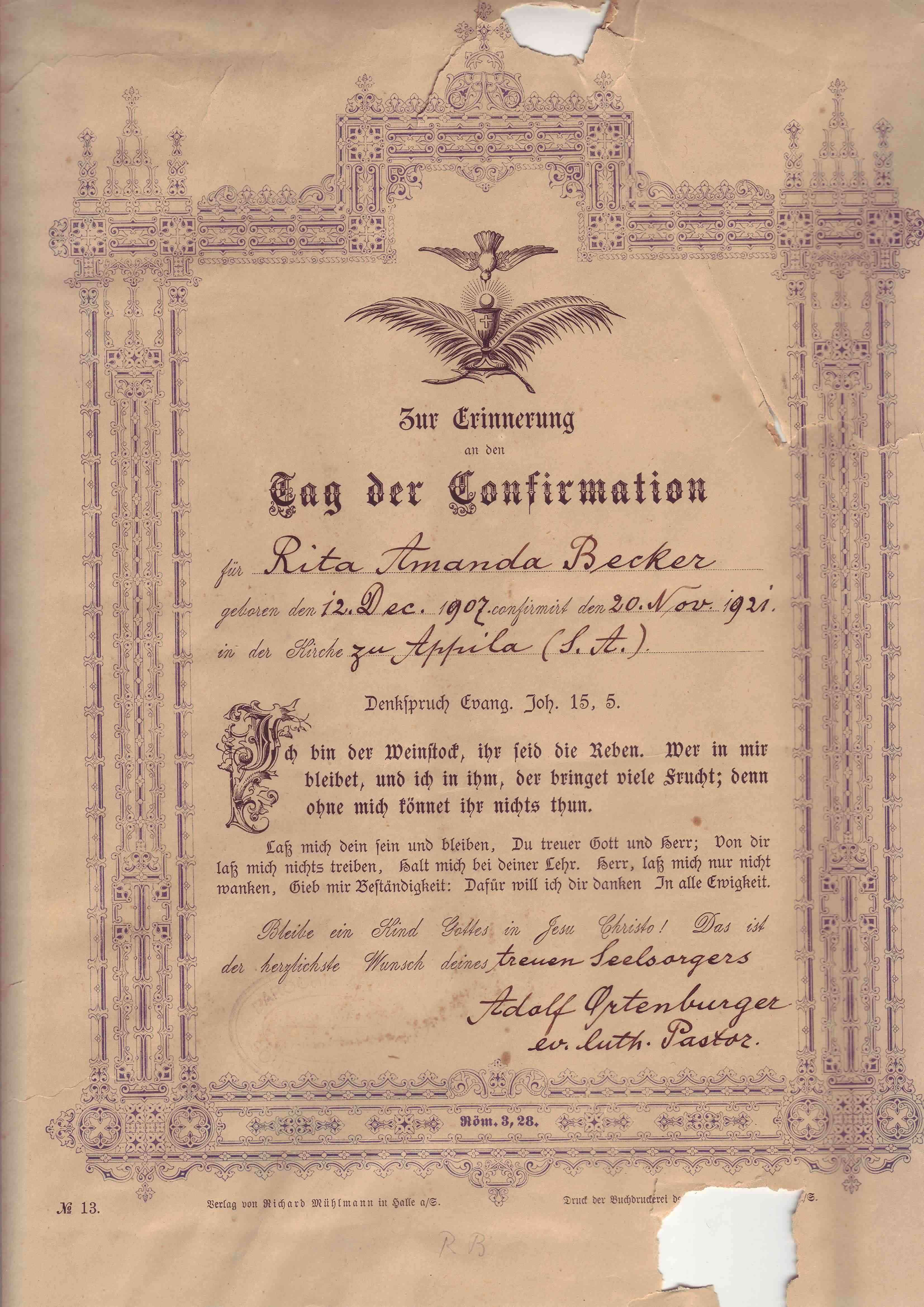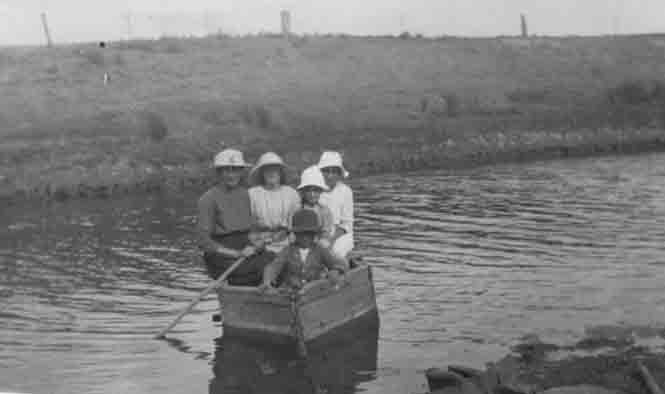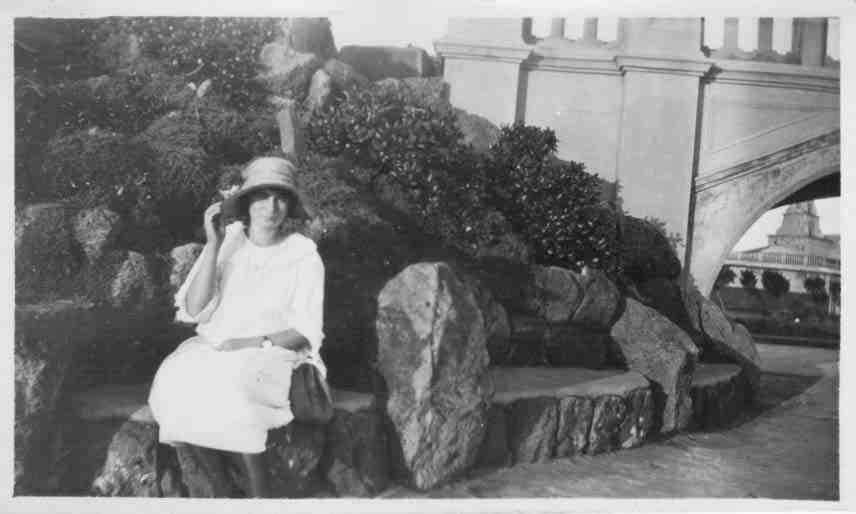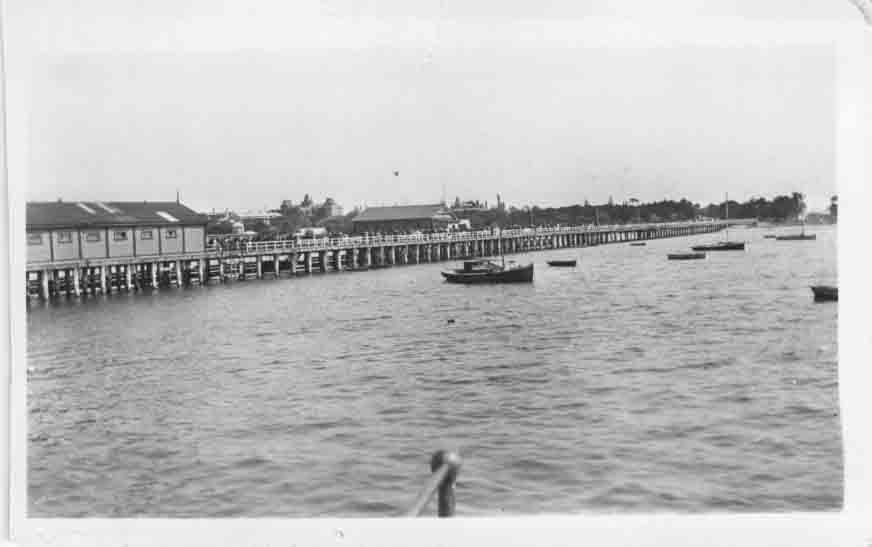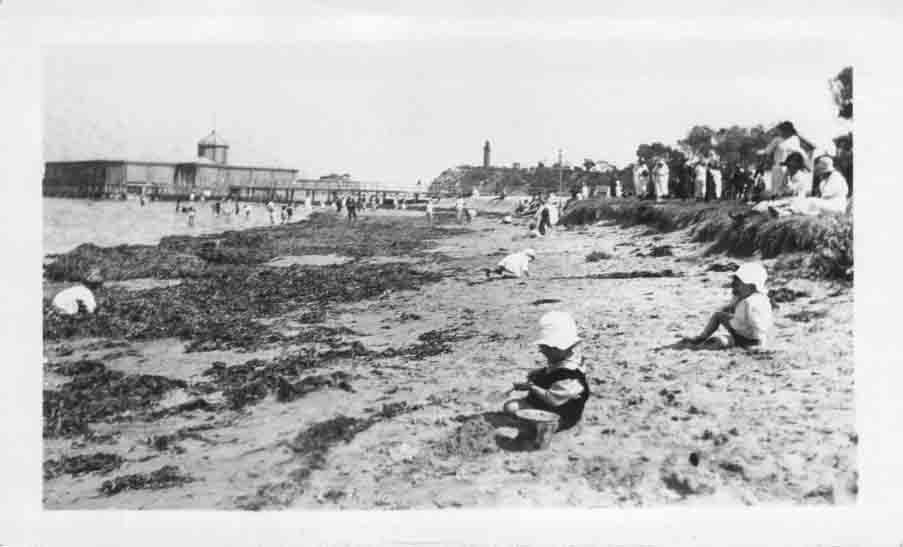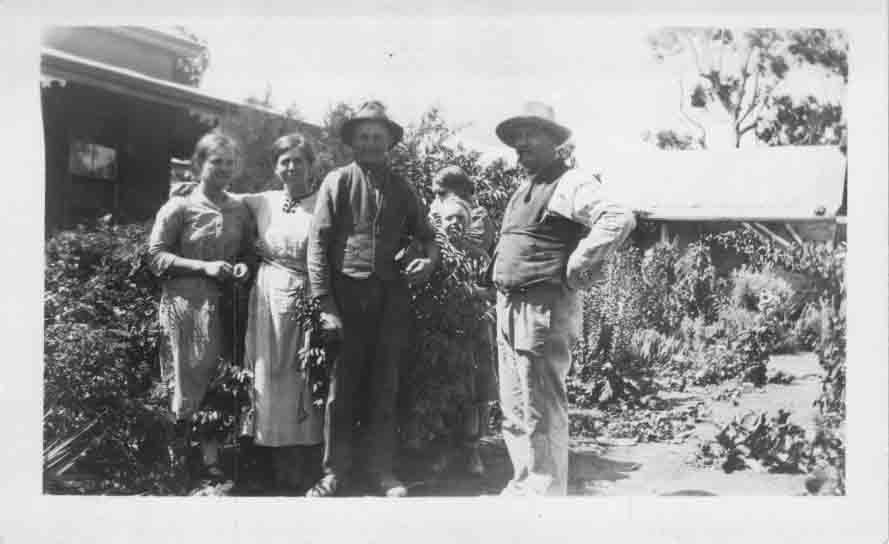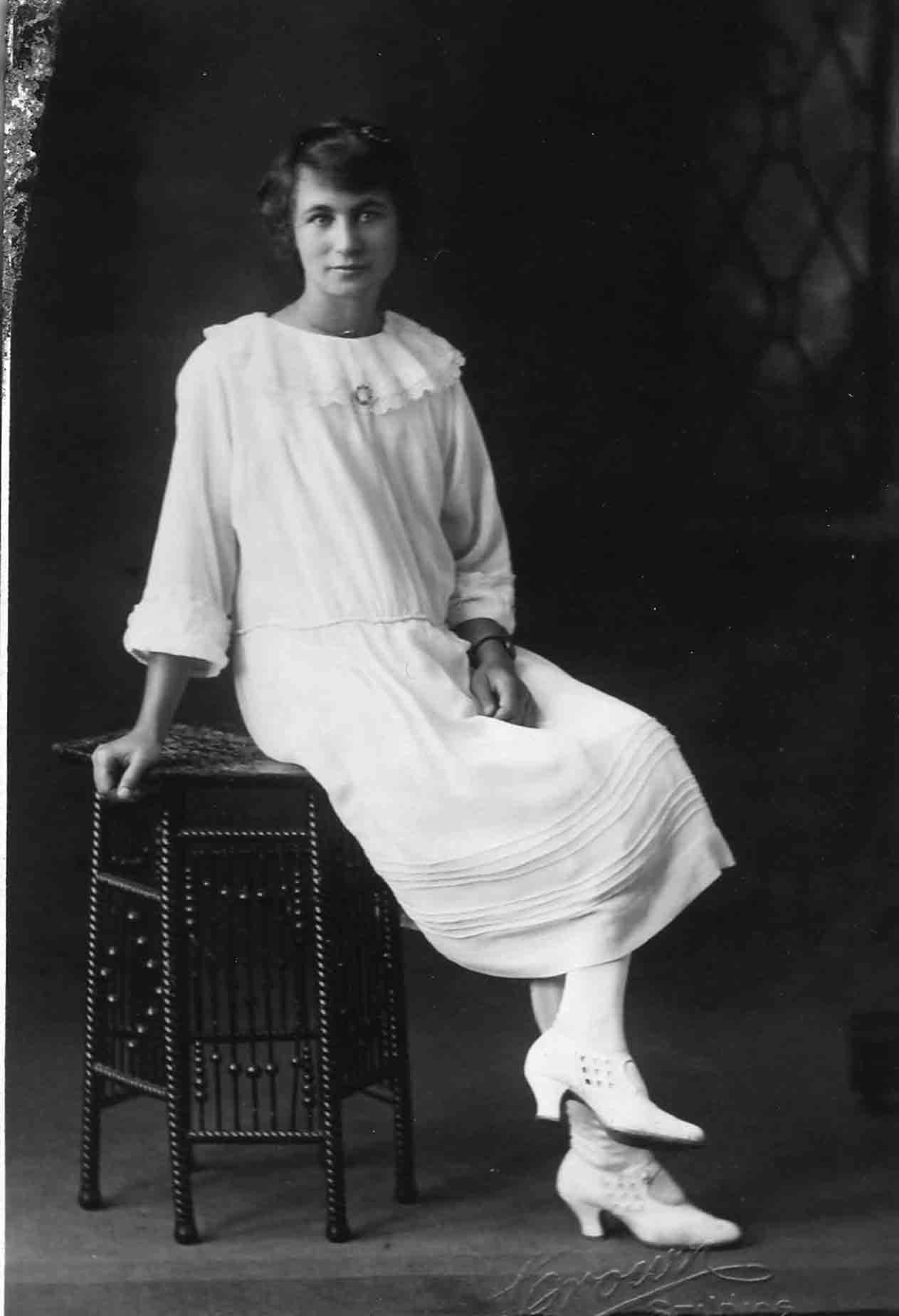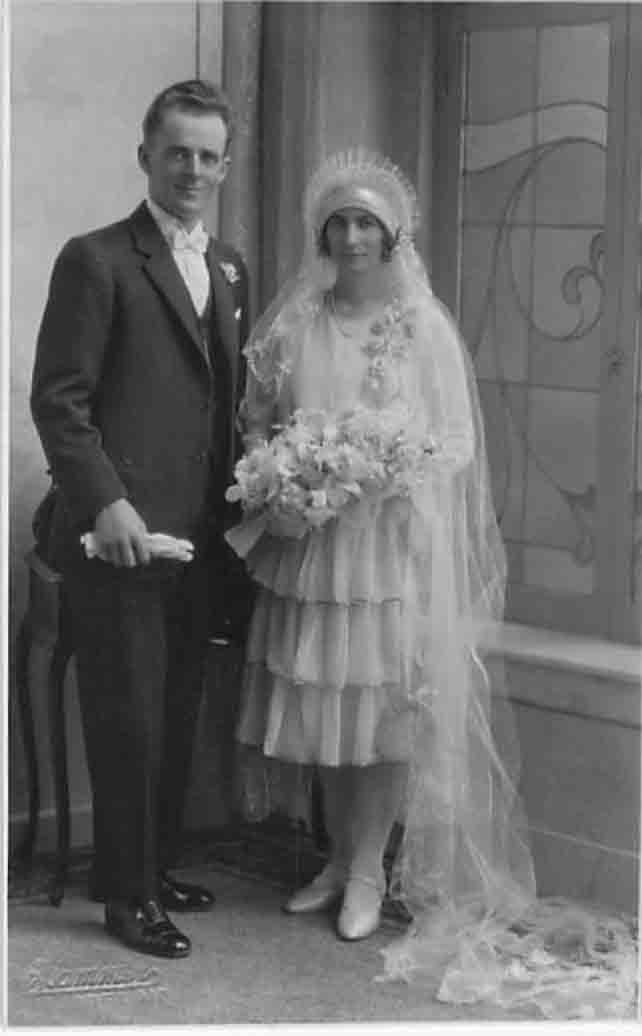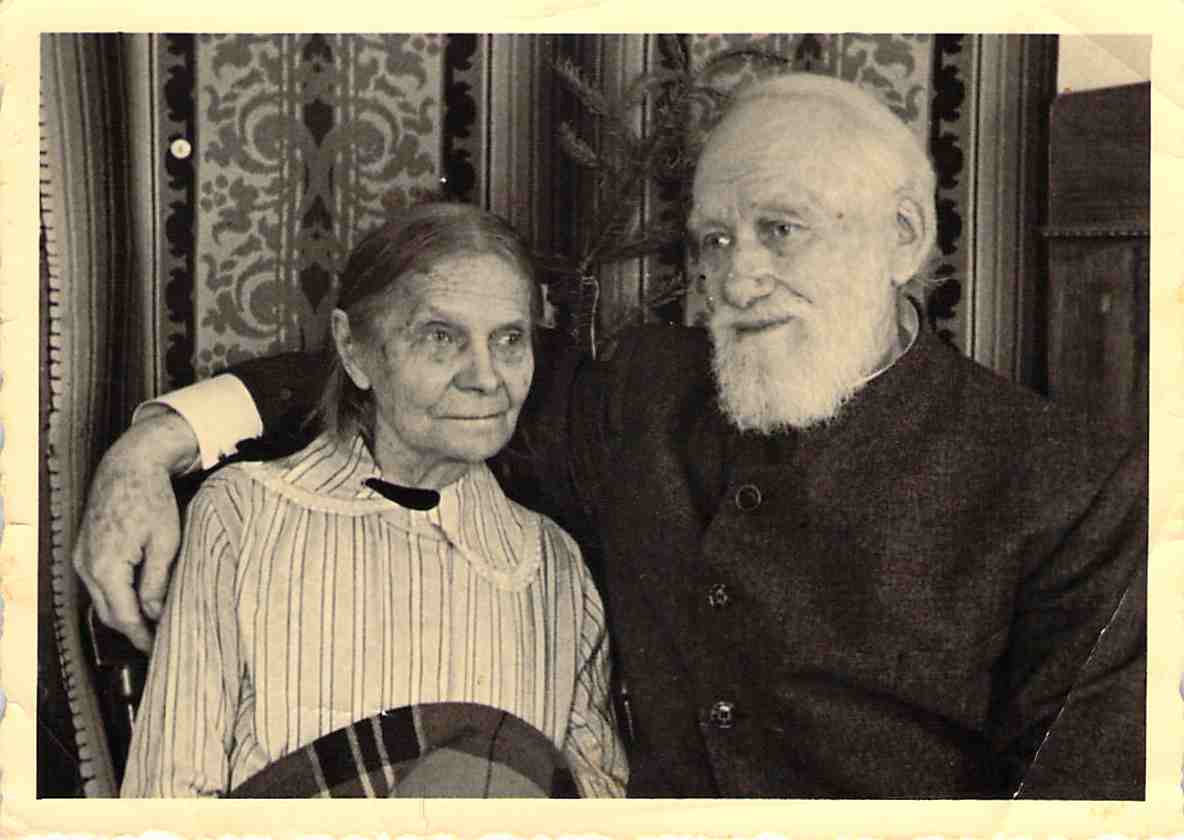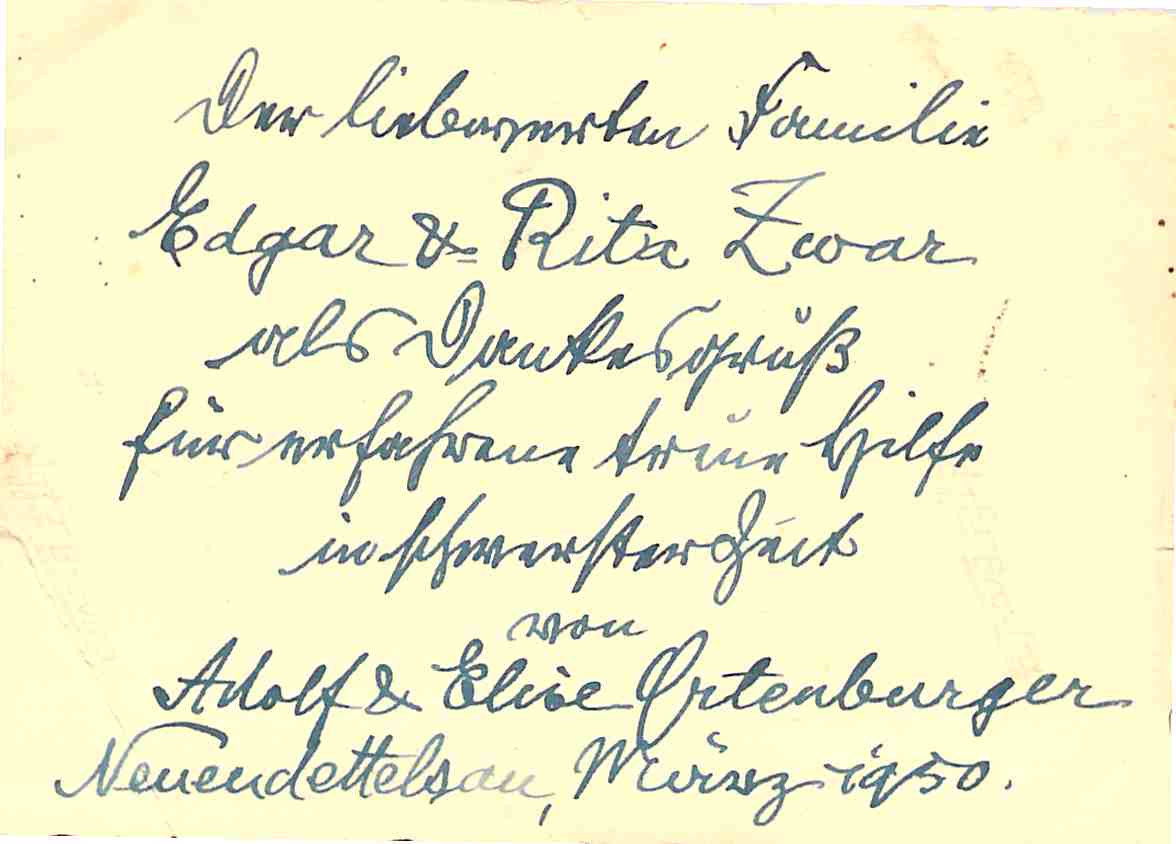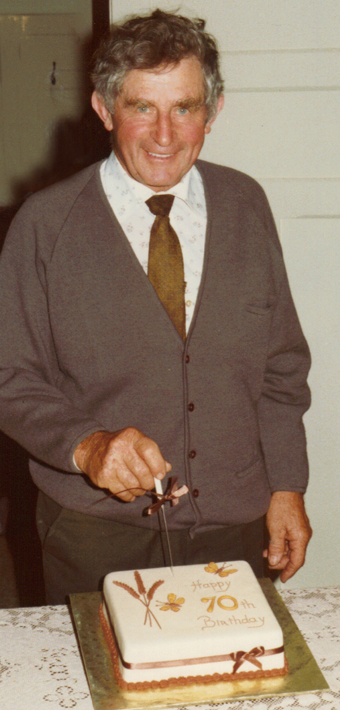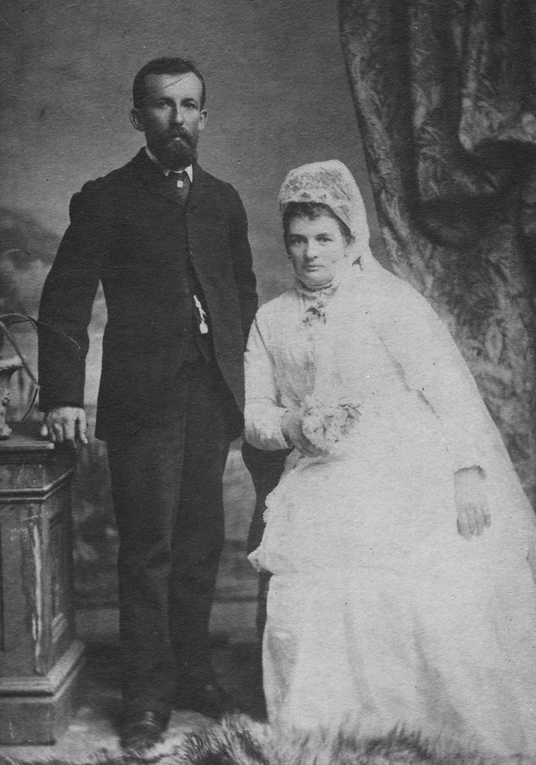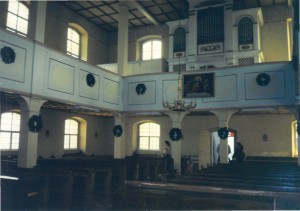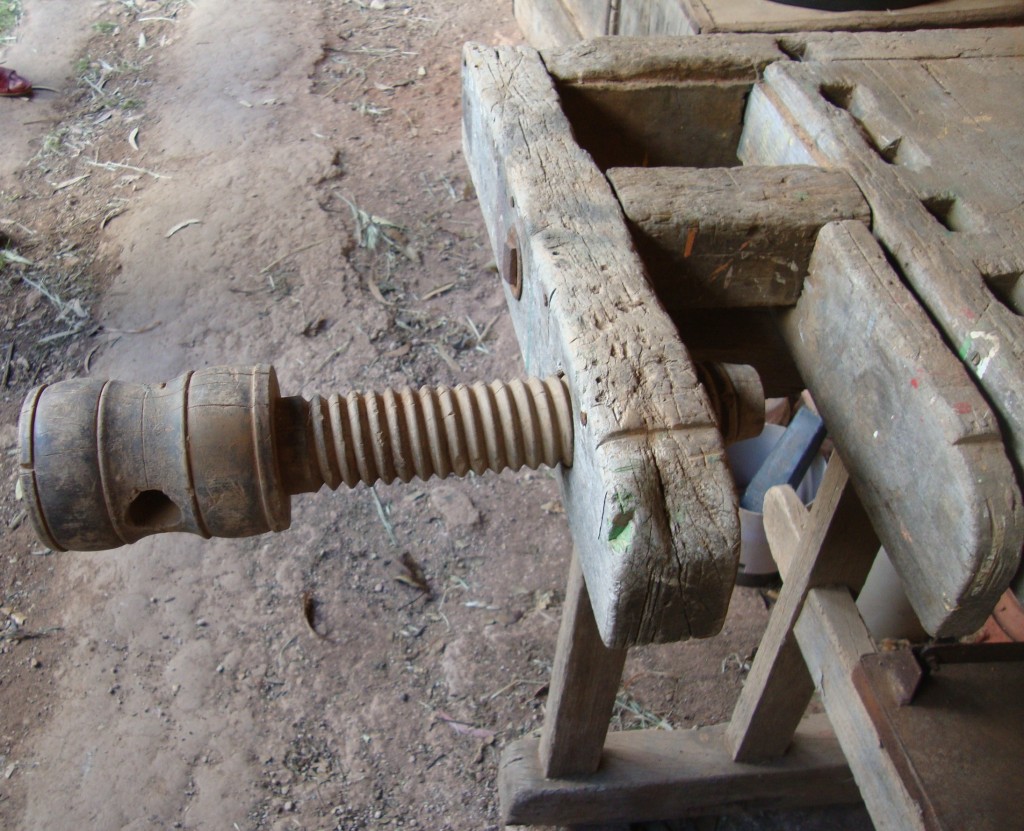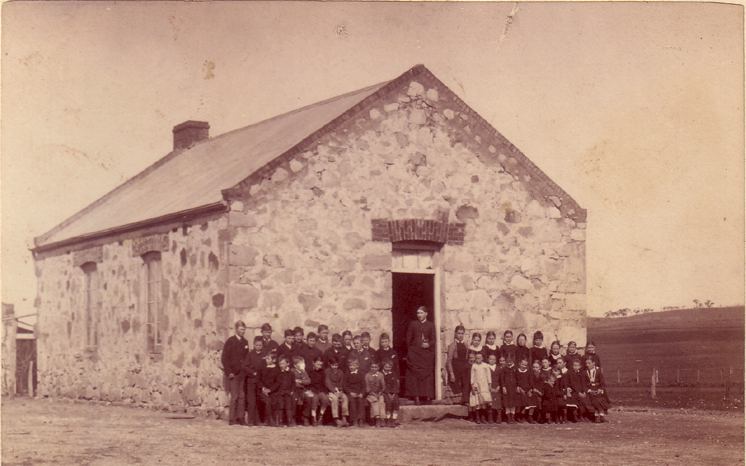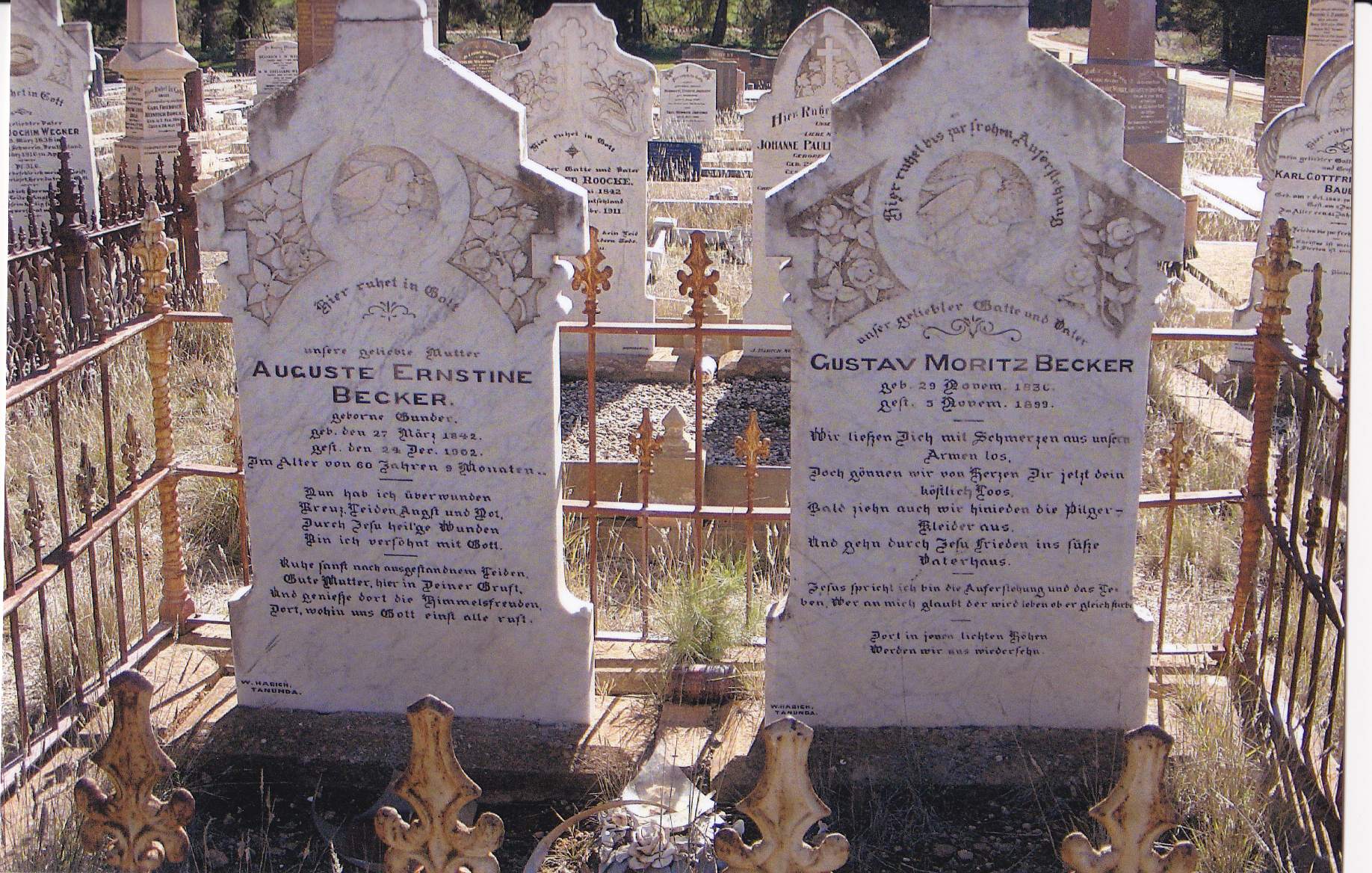Detailed biography
The first of the Zwar family to go to Australia.
Parents
Michael Zwar was born on 24th March 1829 in Drehsa, a small town a few kilometres from Bautzen in the Kingdom of Saxony. He was the eighth child and fifth son born to Johann and Anna Zwar, who finally had eleven children – five daughters and six sons – exactly the same number as Michael would later father himself!
Michael’s father had been born a month before the French Revolution in 1879. His mother was four years younger, and they had married in 1812. Michael’s father was a 40 year old market gardener when Michael was born, and his mother was 36.
Siblings
Michael’s oldest brother and two older sisters had already died at least 12 years before Michael was born. The other children still living were Andreas, now 11 years old; Johann (7), Peter (5) and Maria (2 years old).
A younger sister, Magdalena, was born when Michael was 3 years old, but 2 years later she died. About the time Michael would be starting school, when he was almost 6 years old a younger brother was born, but was stillborn. A year later his brother Karl was the last to join the family making it 2 parents and 6 living children.
School
Michael apparently got along quite well at school – also with his teacher. In his first letter home from Australia he wrote: “Best wishes to schoolmaster Forster and all my old schoolmates.” Four days before Michael’s 11th birthday his father died, 20.3.1840. An older brother, Peter, had just taken on his first job at Huhndorf (near Dresden). I do not know if 19 year old Johann was still at home. The oldest of the boys, Andreas, was apparently to stay on the home property. Also helping their widowed mother at home were Maria, now 13 years old, Michael (11) and Karl (3 and a half).
To Australia
On 24th August 1849, when Michael was 20 years old, he sailed for Australia from Hamburg on the 345 ton ship Prubislav. There were nearly two hundred other passengers on board with Michael.
Why did Michael leave home for Australia?
Overall it must be borne in mind that this was the time of a great emigration from Europe to the ‘New Countries’. From 1850 to 1870 about 5 million emigrants left Europe and went to the U.S.A., largely from Germany, Scandinavia and Ireland. Only a relative trickle went to Australia. I am fairly certain the final impetus that caused Michael to leave was that he turned 20 and was called up for the 2 years military service all the 20 year olds had to go through in Saxony. The story has always been passed down by his family in Australia that Michael hid under a load of vegetables to make his escape. In the call-up he could be sent to fight anywhere and his folk had experienced the worst of wars.
The Battle of Wurschen
The local school Michael walked to as a schoolboy at Wurschen is the name for an enormous battle the English call the Battle of Bautzen. The French call it the Battle of Wurschen and the name ‘Wurschen’ appears on the Ach de Triomphe in the centre of Paris as one of Napoleon’s great victories. The battle took place in 1813, the year after Michael’s parents married. The French general Ney led his troops past both sides of the Zwar village of Drehsa to attack the allied troops on the otherside of Drehsa. Altogether there were 300,000 troops involved in the battles in and round Bautzen. There were about 50,000 casualties. No wonder young men like Michael were not keen to join the army for two years service! The Saxons fought with the French against the Russians and Prussians.
Passport
One had to get a passport for permission to leave Saxony. In 1848 there were revolutions in Europe, including one that was put down at Dresden, about 50 kilometres from Michael. His older brother Peter was called up again for military service at this time too, but was declared to be medically unfit for the second time. Peter had intended going to Australia at this time too, but for some reason changed his mind.
Another reason Michael could go was that he wasn’t needed at home. He had three older brothers, of whom only Johann had married (In 1847) at this stage. In later years Johann and Peter would also leave for Australia, and his youngest brother Karl would become a butcher at Grosspostwitz. This still left the oldest son Andreas at home to care for their mother and their sister Maria.
Newspaper Reports
People left Europe for many reasons at this time, but mainly because they thought there would be better opportunities for a future in the new countries overseas. The newspapers were carrying letters and reports from those who had left. Already in 1842 the Wendish newspaper Already in 1842 the Wend newspaper ‘Tydsenske Nowiny’ carried the following article:
23rd July 1842
“News from those who migrated from Brandenburg to Australia has so far been favourable. They have established two villages, Klemzig and Hahndorf not far from Adelaide, developed them and grown good crops of wheat and barley. A shepherd out there receives 270 Taler annually, (£90 sterling ?) in addition to a free dwelling and free food. Landowners or settlers who are obliged to pay that amount must accordingly have the resources to do so.”
This newspaper was published at Bautzen only a few kilometres from the Zwar home. Ten years later Johann Zwar wrote a report of his trip for this newspaper as he knew the editor.
Travel Agents
There were people who made their living convincing people to go to the new countries. The shipping companies paid travel agents a commission for every person who boarded their ships. The agents painted wonderful and alluring pictures of life in Australia. Some even pretended they were going too!
An advertisement appeared In the Tydsenske Nowiny 21st April 1849:
“An association of migrants numbering 60 has been established. Further interested persons are urged to apply for membership so that they can help with the planning. Among the important questions still to be resolved are the following: the securing of a pastor and teacher, also the most necessary tradesmen and servants.”
The securing of a pastor would encourage the religious people of Lusatia to apply. The deeply religious would not consider migrating if their religion was to suffer. The Church was the centre of their village life. If a schoolteacher would come as well there would be a better chance to get the families with young children to go along too.
On 7th July the paper reported that Pastor Andreas Pench of Bautzen and Johann Zimmer of Weissig had been signed up, and that the voyage would begin at the end of the month. The fare was 76 Thaler (25 pounds) (children under 8 years 40 Thaler, and infants free). There were some delays.
The newspaper of August 14th reports that Pastor Pench addressed his words of farewell, being about to commence his term of service as spiritual leader of the migrants to Melbourne in that richly blessed land of Australia.
The stage was set for a journey to a great future. If anyone had doubts they were reassured by the large number of others someone knew who had already migrated or were about to go. As Hoehne said:
“This one is migrating, that one is migrating, and so I’ll migrate too.”
They said their farewells to family and friends and traveled across Germany to Hamburg, full of anticipation.
Hamburg and the agent Hartig
In Hamburg a series of incidents soon changed their mood and they were soon wishing that they had never thought of the idea. The first shock waiting for them was the news that Pastor Andreas Pench had died in Berlin on his way through to Hamburg. Even his possessions were at Hamburg already as others had brought them along for him.
Secondly, there was no ship in Hamburg to take them on their voyage! This meant that they had to find and pay for accommodation. They booked into the guest house ‘’Zum Wilden Mann’‘.
Added to this, Hartig now demanded more money than he had actually mentioned previously. There were other discoveries about Hartig which soon had them cursing the day he was born. The passengers intending to sail came from different parts of Germany. The majority were Germans. Several Germans had no money, but Hartig had persuaded them to come anyway because “the Wends had money and were good people and they would pay for them etc.‘’ When the Wends arrived and were informed of Hartig’s generous plan the Wends would have nothing to do with the Germans who were to be their shipmates. At Hamburg the intending passengers learnt for the first time that Mr. Hartig and his wife were not actually coming on the trip themselves. He had given the impression that he and his wife would be with them all the way!
The feelings against Hartig and his wife grew stronger by the hour. Several migrants broke down and wept and would have gone home if they could have. Some of them claimed that Hartig’s wife had bewitched them, so to speak. The Wends decided that as Hartig was so crooked they would definitely not go to the place recommended by him (ie. Melbourne) when they arrived in Australia. It would probably be as corrupt as he was!
Pastor Pench’s brother turned up from Ebendorfel to collect his dead brother’s belongings. Hartig would not let him have them unless he paid out 70 Thaler (almost the fare to Australia!). Hartig said that he had had to attend to this and that for the deceased Mr Pench and he would not hand over the possessions until he had been paid. Pench went to the police who directed him to the council. At the council he learnt that they all knew Mr. Hartig. He had brought migrants to Hamburg before and had always fallen out with them. The council advised Pench to pay 20 Thaler, although he could stay and fight the case with Hartig, which could possibly cost him more. Pench paid Hartig 20 Thaler and received his brother’s belongings.
Church and Abraham
The Wends had time on their hands. They attended church every day. A child of the Wend Wuchatsch was baptised. At a communion service an elderly pastor preached on Abraham, his call from God to leave his country, and the promise of God to go with hi. The pastor told the intending travellers that they had received no call from God to leave their land and no promise that he would be with them to bless them. What a cheerful encouragement from the pulpit!
Prübislaw
A ship was being prepared for their journey. They could go aboard and watch the carpenters installing various fittings and 250 bunks. The double bunks were placed alongside each other in double rows. There was 3 metres of space from floor to ceiling.
War Rumours
A rumour suddenly swept Hamburg that the Prussian army was returning home from Schleswig-Holstein via Hamburg and that this would cause riots etc. The Wends were terrified. They could remember how the Prussian troops had put down the uprising at Dresden only 3 months earlier. But nothing came of it.
The Sea Journey
The Prübislaw finally left Hamburg with 168 adults and 61 children on August 23rd 1849 under Captain Wilhelm Niemann. Even this was not achieved without an accident! As they were sailing out of the harbour they rammed a smaller coal ship which sank with all on board.
There is not a lot to report on the actual journey. There was naturally a lot of seasickness. Michael Zwar became seriously ill. He could not even walk. Fortunately he had a real mate in Andreas Kaiser. As Michael later wrote home:
“I regard him as a true blood brother, for in my illness he looked after me better than I asked. I could not walk so he led me about and stayed by my side on many a night to care for me without getting any sleep. God reward him for this! I will never forget what he did for me. There is nothing worse in all the world than to take sick on board ship, for there one is completely forsaken. I had a very high temperature during my illness but because of the scarcity of water I had to endure a terrible thirst. Besides that, the water stank so badly that I had to hold my nose when I wanted to drink. How uncomfortable it is for anyone sick on board a ship. The din made by one’s fellow passengers is almost unbearable.”
Hoehne later wrote home:
“On the whole journey 14 people died. In addition to other difficulties we had to suffer a good deal from fleas, lice and bedbugs.”
Rio de Janiero
We possibly imagine the ship coming down the coast of Africa, rounding the Cape of Good Hope and then heading for Australia. However the popular route for the German sailing ships was to sail through the English channel and then catch any winds they could to carry them over the equator and over to South America where they would put on fresh provisions at Rio de Janiero in Brazil.
Then they would make towards the South Pole – going so far south that it might snow (as it did later when Johann came out). Way down below Africa the Westerlies would catch them and blow them on a fast course to the southern shores of Australia.
The Prubislav arrived in Rio de Janiero on October 27th to take on fresh meat and water. Here they had some troubles. The passengers published a bitter letter of complaint directed against Knorr and Jannsen, the Hamburg forwarding agents. Their complaints were about the Captain, the overloading of the ship, and about the spoilt condition of their food supplies. As a result they spent more than a month in Rio and only left on December 2nd.
Two storms and two months later they saw the Australian coast on Feb. 2nd 1850.
The 1850’s and Melbourne
The Melbourne Argus reported their arrival:
“The Probislav barque from Hamburg 24th Aug. arrived on 2nd Feb. She brings out 198 German emigrants, the greater portion of whom intend to settle here, and the
remainder are going on to Adelaide …. Four births occurred during the passage, but not any deaths or sickness, the passengers, of whom only a few can speak English, expressed themselves highly pleased with the appearance of the country.”
About seven Wend families landed at Melbourne, including Johann Wuchatsch, Karl Hoehne, Andreas Kaiser, Michael Zimmer, Johann Stephan and Michael Zwar.
Melbourne’s population at this time was approximately 25,000. The Wend families who disembarked would have visited, or been visited by the Wends already in and round Melbourne. Each would have been glad to see the other. The new arrivals would have the latest news from home.
Ponich
Several years later Johann Ponich was digging for gold in the Alexander Hills, eighty miles from Melbourne, when he heard of the arrival of the ‘Helena’ at Adelaide. Ponich left the diggings immediately and went about 600 kilometres to Adelaide to spend some weeks with the new arrivals.
Australia
Initial Shocks
“One at first expects everything in Australia to be easier than it really is.”
This great understatement was made by Michael Zwar when he finally got to writing a letter home. The truth was that things were so bad that he did not write home for another 15 months. This was a fairly common experience. Johann Mirtschin did not write home for over 3 years for the same reason. Before they left home there were always those who said in dismay, “Why do you want to leave our Country?” and “Why do you want to leave here?”
The same questions are asked today when someone leaves Australia for overseas. When the immigrants arrived in Australia they had something to prove, as did those who came out to Australia 100 years later in the big migration of the late 1940’s and the 50’s. They wanted to show the people at home they hadn’t made a mistake, and were better off in the new Country.
When the Wends came to Australia they were in for some shocks.
Foreign Language
They did not anticipate the degree to which they would be handicapped by not knowing the English language. Michael Zwar later wrote home:
“On the voyage out I didn’t worry about learning English, though I had books and time enough. I learnt nothing so that when I stepped ashore I didn’t understand even ‘yes’ or ‘no’. Dear brothers! Don’t think that coming to a new country is a simple matter. Imagine landing among a foreign people where one understands not a word. It often happened that I said ‘yes’ when I should have said ‘no’, and when they called me for meals, I had no idea what they meant. Added to that I had a senseless boss so that it seemed I had exchanged my homeland for hell. Had I at that time written home, my compatriots would surely have been afraid to come to Australia.”
Michael also wrote:
“I had been working for an Englishman who wanted to cheat me out of 10 pounds sterling…. He had written a receipt and although I did not understand what it was, yet I signed the statement saying that I had already been paid. With God’s help I did receive 7 pounds but I was cheated out of 3. Out here one has to watch carefully that one is not deceived. Until a man knows English he has to pay education fees, (ie. he has to let others take unfair advantage of him).”
His shipmate Hoehne experienced similar problems:
“It is seldom that you meet someone who knows German and English. If ever you need such a person to tell you the right street, you have to pay 25 new silver groschen. Thus a person who comes from Germany has the last groschen drawn from his pockets. Finally he can be given no other advice than that he he take a stick in his hands and a mantle over his shoulders in order to go 200 to 260 English miles into the unsettled heathland. There he finds some sort of old shed made from the bark of trees and that is his house. The bed on which he lies is also of bark. If he takes more things with him, they are bound to be stolen. As for food, – flour, tea, sugar and meat will be sent to him. The flour is then pressed into the bark, a loaf is made out of it, and it is somehow baked in the fire. Now you have bread, meat and tea one day; the next day you have tea, meat and bread; and for variety you again have bread, meat and tea etc.”
Michael’s First Letter Home
Michael Zwar was careful about advising his brother Johann to come and join him in Australia. In his first letter home he wrote:
“Should the Fatherland be visited by troubled times, then come out to me. If on the other hand times are peaceful and you can live on what you earn, then stay at home. That would be better and you would have a less troubled life. I leave it to you, I will neither encourage nor discourage anyone.”
Michael was not to know that Johann and the letter would pass each other on the high seas. Johann had left Saxony for Australia before the letter reached home.
When Michael writes the first letter home he is over the ‘miserable’ stage. He intended to return home after several years for a visit, but not to stay. He did make the visit, but it was nearly 30 years later.
Employment and Land
Michael was happily employed (1851):
“I am presently 60 miles from Melbourne out in the bush, where there is nothing to see except the blue sky and endless gum trees. I am busy plowing and must cultivate 300 acres. My boss is very good.”
He does not say where he is working, but his letter is sent from Point Henry, near Geelong, and about 90 kilometres miles from Melbourne. There was a German settlement there which became known as Germantown – and renamed to Grovedale in the War years.
Brunswick Land
Michael casually mentions that he has bought an acre of land near Melbourne and that he hopes to go into the brick making business in the following year (1852). He was probably working to pay off the loan he had taken out to buy the land. The land was in Brunswick, quite near the city, and just off the main Sydney road. It cost him 20 pounds. The half acre is shown in the plan below as it is today, now part of the Jewell Railway Station and partly used for streets. The land in this street was selling for $11 per square foot in 1980.
Naturalisation
In order to buy land one had to be a naturalized citizen. Michael applied for naturalization in a letter on September 30th 1852 and states that he is 23 years old, living in Melbourne and a farmer, and is desirous of purchasing land and of establishing himself for life in this Colony. The referees who backed his application were George Muller, Edmund Ashley, Lonsdale Street, and N Heales, Lonsdale Street. The Certificate to Naturalize was issued to Michael Zwar in Melbourne on the first day of October 1852.
A Letter Home
Michael had received several letters from home. He owned land. He was working for a good boss. His future seemed assured. So now he writes his first letter home to tell them about the new Country. It was almost 2 years since he had left home.
The year Michael wrote his first letter home (1851) became the turning point in the history of Victoria. It began with a drought and ended in a gold rush.
Drought and the Black Thursday Bushfires
The drought came along with searing temperatures. No one had experienced such heat before. It is still the hottest year on record (?). Thursday 6th Feb 1851 became known as ‘Black Thursday’ when fire devastated Victoria. The people of Melbourne tried to find shade from the temperature (over 110 degrees) and shelter from the roaring hot winds which blew sand, dust and gravel up the streets and through the buildings.
Fires burnt from Gippsland to Portland – 300 miles, and inland more than 60 miles (including what later became Broadford). A number of people lost their lives. Hundreds of thousands of sheep were either burnt or had to be destroyed afterwards. The wildlife suffered too:
“The roasted bodies of kangaroos and emus had to be pushed aside from the roads; birds had dropped from the trees killed by the heat rather than fire; the track by the Barrabool Hills to Melbourne was carpeted with dead magpies and parrots…”
Kiddle ‘Men of Yesterday’ p. 182
The drought continued until September.
A New Colony
On July 1st 1851 Victoria officially became a colony separate from New South Wales. The new colony had a total population of 77,000. (23,000 in Melbourne, another 17,000 nearby, 8,000 in Geelong, and 29,000 scattered throughout the rest of Victoria.)
It was a pastoral colony. The sheep numbered six million!
Gold!
Michael mentioned the discovery of gold in New South Wales in his letter home. People were already leaving for the diggings from Victoria, so a ‘Gold Discoveries Committee’ offered a reward of ₤200 for the discovery of gold in Victoria. Two claims were made immediately in June. In August gold was discovered at Buninyong (near Ballarat), only a day’s journey from where Michael had written his letter.
The Melbourne Argus reported:
“One tenth of the population of Geelong are already mad to get off to the
diggings.”
15.8.1851
“the whole town of Geelong in hysterics. Gentlemen foaming
at the mouth, ladies fainting, children throwing summersaults.”
29.9.1851
A Wend, Johann Ponich, earned ₤250 (equal to about five years wages) by the end of the year when incredibly rich fields were in full production at Ballarat, Bendigo, Mount Alexander (Castlemaine) and Mclvor.
Goldrush
In the last days of December the first shipload of diggers arrived from overseas. (They were on their way to NSW, but all left the ship when it called at Melbourne). 94,644 new arrivals came in 1852 and more than doubled the population.
Victoria would never be the same. Workers simply walked off their jobs and rushed to the diggings. On 1st January 1852 only 2 out of 140 police remained on duty in Melbourne. Wages doubled in the year to try and keep people at their jobs. The pastoralists could not get shearers to shear the 6 million sheep.
Up to 50 ships were stranded in the harbour with no sailors on board to sail them. Some seekers struck it rich at the diggings. Others made quite a tidy profit carting supplies to the goldfields. Michael Zwar was one of the latter. At first he dug for the precious yellow metal. Then he turned to carting supplies to the goldfields.
Carting Supplies to the Goldfields
We do not know when he began, but in 1853 Michael was carting flour to the Beechworth fields at ₤40 per ton. Carriers were demanding up to ₤150 per ton to take supplies to some of the fields. Prices skyrocketed for all goods. For those who came from Europe by ship, it now cost more to get their goods from the harbour to Melbourne than it had cost to bring them from Europe. Parts of Melbourne grew into tent camps holding thousands; and if you did not have a tent you could bed down in a horse stall with 2 others at 5/– a night (each!).
There were no ‘roads’ to the diggings. The drays and wagons, usually overloaded, had to make their way through scrub, forest, swamps and creeks along rough bush tracks. In wet weather there was often no way through at all. Drays would disappear completely in deep bog holes. Wagon teams became bogged for weeks at a time. During 1853 it was costing one Ballarat Publican ₤1,500 each month to get his supplies through from Geelong.
Reports of the Goldrush in Wendish Newspapers in Saxony
The Wendish Newspaper carried reports in Saxony!
“A man digging for gold in Australia… reports: The cost of living is terribly dear out here …It is almost like a lottery. If you strike it lucky, you may become rich. Ships arrive daily with migrants from many different countries. Everyone is waiting anxiously for the arrival of more police from England as cheating, robbery and murder occur here in broad daylight and no one ventures out unless well armed.”
Tydsenske Nowiny 29.1.1853
“Australia. An English paper reports that up until now much gold is still being found here, but also says that everything is so very dear, so that despite the large quantities of gold being found there, people are not much better off.”
Tydsenske Nowiny 29.1.1853
“Because there is a great shortage of women in Australia, an Englishman by the name of Lindsay this year plans to bring out about 900 on his ship, hoping that in a short time each one there will have found her man.”
Tydsenske Nowiny 29.1.53
“A fortnight ago four ships between them brought 354,648 oz. of gold from Australia to London. Such a large quantity of gold had never previously been transported and even larger amounts are still expected.”
Tydsenske Nowiny 2.4.53
“London newspapers write that there is a great lack of women in Australia. All unmarried women who are brought there secure a man on the spot. A clergyman in one week solemnised the marriages of 200 couples.”
Tydsenske Nowiny 6.8.53
“An English language newspaper writes from Australia: Melbourne today presents a unique appearance. The city itself is surrounded on every side by suburbs consisting of wooden buildings or tents. Very few houses have of late been built of stone or brick. There are now 70,000 people in Melbourne and adjacent areas, with houses sufficient for only half the population. No wonder that sickness is rife. In addition, Melbourne is one of the dirtiest and muddiest of cities, so that as can be imagined, it can not be classed as one of the more pleasant resorts. Mail services are very poorly organised. Long-term residents may sometimes receive their letters, but new arrivals rarely do so unless their mail is addressed to well-known business houses.”
Tydsenske Nowiny
In the three years since 1851 the population of Victoria increased fourfold and a number of the newcomers were from the Continent. There were many people now who could not speak English, but this was not a great handicap when digging for gold.
Brother Johann
By the time Michael’s first letter home reached its destination, his brother Johann was on his way to Australia. Johann Zwar’s ship called in at Adelaide on Christmas Eve 1851, on its way to Melbourne where he was to join Michael.
There were 98 Wends on the ship (out of 128), and when the South Australian Wends heard of their arrival they went to Port Adelaide to greet them. They needed help with their harvest, so they convinced the Wends to unload in Adelaide and help them, ‘’And then you can go on to Victoria later if you are not satisfied with South Australia’‘.
Some of the Wends did go overland to Portland several years later and finally settled near Penshurst, but Johann stayed in South Australia.
Johann and Michael did visit each other in later years, but apart from Johann’s visit in 1863 records or details of their visits are scarce.
Brunswick
On 16th October Michael sold the half acre of land at Brunswick to John Myers for ₤40. He repaid 18 pounds still outstanding on the loan of ₤20 he had taken from James McEroy to buy the land, and made a profit of ₤20. The Brunswick clay was particularly suited for brickmaking and a number of brickworks opened there. Michael had intended starting a brickworks of his own but worked instead for Hoffmann’s. (Hoffmann’s became the largest of them all and made bricks there for over 120 years). We do not know exactly when Michael began working for Hoffmann’s, but it is said that he carted bricks for the building of the Sarah Sands Hotel. This was opened in 1854.
Agnes Zimmer
Of more importance to Michael at this time was a young 17 year old Wend lass called Agnes Zimmer. Agnes had come out on the same ship as Michael with her brother. Her brother Michael had worked as a shepherd at the Red Bluff for 9 months, followed by a variety of jobs. He also carted supplies to the Bendigo (and later) Beechworth goldfields.
Lutherans
Just when Michael Zwar and Agnes Zimmer were thinking about getting married, Melbourne suddenly had a Lutheran Pastor. Michael had been attending services with other Lutherans (Wends & mainly Germans) in the chapel of Mr. Morrison in Collins Street in Melbourne. (Mr. Morrison was an Independent Minister).
The Lutheran services were led by laymen and held on Sunday afternoons. The Lutherans had been trying unsuccessfully for several years to get a Lutheran Pastor to Melbourne. The only Wend-speaking Lutheran pastor in Australia (and the only one who ever came to Australia) was Pastor Kappler who had landed in Adelaide in 1848. In 1852 he visited Melbourne, but many of the Lutherans had left Melbourne and joined the gold rushes and there were not enough left to support him, so he returned to Adelaide.
Pastor Matthias Goethe
The first permanent Lutheran pastor in Melbourne was an unusual man who became their pastor in unusual circumstances. Matthias Goethe was born in Germany, began studies for the Roman Catholic priesthood, became a Protestant and went to England where he married an English girl. He was brought out to Sydney by Dr. Lang and taught at Lang’s ‘Australian College’ in Sydney. The college included a curriculum which Presbyterian students for the ministry had to pass through. In Sydney Goethe was ordained to the Presbyterian ministry, but also preached for a small German Protestant congregation which met in the same hall where Goethe taught mathematics and modern languages. When the College was failing, Dr. Lang advised Goethe to go to the Germans in Melbourne as he knew they were desperately looking for a minister.
In an unusual service on Good Friday in 1853 Matthias Goethe was installed as the Lutheran Pastor in Melbourne by Rev. James Clow, assisted by seven other non-Lutheran clergymen.
Marriage and Family
Eighteen days later Pastor Goethe married Michael Zwar and Agnes Zimmer.
The marriage certificate reads:
Michael Zwar of Pendrige near Melbourne and
Agnes Zimmer of Dry Creek v12 April 1853 at Mr Morison’s Chapel
in the presence of Carl Ernst Hempel and Fredericke Ziebel
of Brunswick and Dry Creek by Matthias Goethe of Melbourne
minister of the Evang. Lutheran Church.
Michael was living at ‘Pendrige’ (later ‘Pentridge’). The area was later named Coburg and adjoins Brunswick. Michael and Agnes lived in this area for about two years. Michael earnt money carting flour to the Beechworth goldfields, possibly with his brother-in-law Michael Zimmer.
On February 2nd 1854 their first child, Gustavus Adolphus was born [at Brunswick ?].
Purchase of Broadford Land
On 12th July the first lands were proclaimed for sale in the Countie of Dalhousie, a district Michael had passed through when carting supplies to the goldfields. On 29th August 1854 Michael bought 88.2.0 acres of land, Countie of Dalhousie, Parish of Broadford.
The official ‘Land Purchase’ shows that the sale was finalised on 3rd January 1855. Michael Zwar of Kilmore’ paid ₤340.14.6
“Yielding and paying yearly unto us, Our Heirs and Successors, the Quit Rent of one Peppercorn forever, if demanded”.
It was signed by Chas Hotham, the Lieutenant-Governor of Victoria. The purchase was recorded in the Register of Lands on 16th January 1855. Michael had apparently started clearing the land and/or building a slab hut in l854, leaving Agnes and their son in Brunswick.
In November 1854 Michael’s older brother Peter and his bride landed at Port Adelaide and went to live with Johann and his wife in the Barossa Valley in South Australia.
More Children
On 6th April 1855 the first daughter was born to Michael and Agnes. They named her Anna Maria Magdalena. (Michael’s 2 oldest sisters had been named Maria and Magdalena, but both died as infants. His two younger sisters had then been named Maria and Magdalena. Maria lived on, but Magdalena only lived two years.).
Anna Maria Magdalena Zwar was born at Epping and she came with her brother and mother to Broadford when she was a few weeks old. Presumably they moved into ‘the hut’ which Michael had been building out of slab timber, in May or June 1855.
Every second year for ten years another child would arrive!
Emily, 14.7.1857
John 2.6.1859
William 1.5.1861
Albert 16.7.1863
Agnes 16.8.1865.
Broadford
The Zwar’s lived about a mile west of Broadford on what became known as ‘Zwars Hill’.
“Zwar’s hill to the West is a steep climb but it is well worth an early morning effort. The view is magnificent and below is Broadford slumbering beneath the morning mists.”
Broadford. A Regional history. p.186
Broadford was on the main road to Sydney from Melbourne. There were still Aboriginal tribes in the area who used to wander from station to station. There were grey kangaroos, possums, and numerous koalas in the forest-land which Michael had bought, and platypuses in the creek. Also bandicoots, native cats and tiger cats [?]..
There were a number of small goldfields near Broadford.
The 1860’s
Michael developed a mixed farm fairly typical of farms at the time – dairy, pigs, fowls, sheep, horses etc – with the unusual addition of a home made brick kiln. Timber was sold as the land was cleared, and the timber not suitable for sale was used to fire the brick kiln.
Michael carted ore from the Reedy Creek goldfields to Bendigo for crushing. (The dray wheel – wagon wheel? – ruts are still in the paddock across the road from the Broadford farmhouse.)
Two Weddings
In 1863 Michael went to Melbourne to help his brother Johann get married a second time. Johann’s first wife had died in 1859. Johann then went to Melbourne in 1863 to marry Anna Kaiser, who was also from the same village of Drehsa in Saxony. She had been a guest at his first marriage. Her brother was Michael’s mate who looked after him on the boat trip out when he was terribly seasick.
On 13th July 1869 Michael was in Melbourne again for another wedding. This time it was his brother Johann’s eldest daughter Maria (from the first marriage). Maria’s father and step-mother did not attend the wedding, and Michael signed the certificate as her guardian, giving her permission to marry August Petschel, also a Wend, who had emigrated in 1848. August and Maria Petschel lived at Hamilton for a few years before moving to the Dimboola District.
The 1870’s
A New House
As the Zwar children had continued to arrive on the farm at Broadford the slab hut began to get crowded. The arrival of Charles, 11.6.1868, and Mary Ann 24.9.70 brought the number of children to nine.
Michael had a new home built with bricks made in the brick kiln on the property. The new house was completed in 1871 (?) and was named ‘Glendale’. In later years it became known as ‘The Ranch’. Henry Peter was the first child to be born in Glendale, 2.12.1873.
There was no Lutheran church in the area, so some of the children were baptized and grew up in the Church of England and some were baptized in the distant Lutheran Church at Thomastown, later to become a Melbourne suburb. At home they all became staunch members of the Church of England.
Councillor Zwar
In 1869 the Broadford District Road Board was proclaimed and 7 local men were elected. Michael Zwar served for 2 years from 1872. It was a responsible position. The members of the Board were personally liable to the Bank for any overdrafts the Board arranged!
The Board became the Shire Council when Broadford was proclaimed a Shire in l874. Michael served a on the Council. He was quite a shrewd man and known as a bit of a ‘bush lawyer’.
It is amazing to find Michaell topping the poll one year in the voting in the English community. English was his third language, after Wendish and German.
Quality Farm
Michael was also a knowledgeable farmer. The following article in ‘The Australasian’ shows Michael was using rotational cropping methods way ahead of his time:
Farming in the Broadford District
The Australasian
Sept 16, 1876 page 377
“North of and adjoining MacKenzie’s farm is another belonging to Mr. Michael Zwar, who has occupied it for 22 years. It contains 360 acres, a great portion of the land being very good, and cultivation is carried on upon a more extensive scale than in the case of most farms in the district.
About 90 acres are usually under crop every season with wheat, oats, peas, and potatoes, and though the land has been in cultivation for a great number of years, yet, by careful management, good returns are generally obtained. The crop of last season was 40 acres, which yielded an average of 23 bushels to the acre, the straw being slightly touched with the rust, but no damage was done by it.
Oats turned out a very good crop, and 17 acres of peas gave a return of 37 bushels per acre. Potatoes generally remarkably well on this farm, but the last crop was only a poor one, owing to the dryness of the season.
Mr. Zwar has made it a practice for a number of years to have a regular rotation of crops, and he considers that, to a great extent, this accounts for his success in farming. His system of cropping is as follows: – Wheat, oats next, then two crops of peas, after which wheat is sown again, and then the land is laid down with English grasses for four or five years before it is broken up again. The remainder of the land is under grass, and in addition to this farm Mr. Zwar also owns another in the neighbourhood, containing 400 acres, the whole of which is used for grazing purposes.
There are about 120 head of cattle, and dairying is carried on upon a rather large scale, from 20 to 30 cows being in milk throughout the year, whose produce is all turned into butter. Among the home stock there is a fine heavy draught mare by Clyde, a sire imported by Mr. J. C. Cochrane, and another by Blackleg.
About two acres have been planted as an orchard and vineyard, close to the homestead, and both trees and vines appear to be well attended to. There is about an acre of vines, which include both wine and table varieties, and generally a large quantity of grapes is obtained, but last season the yield was a poor one. The most prolific variety is one known as Espartè, which nearly always bears an immense crop: the hermitage is also found to generally give a good return.”
Oldest Daughter Marries and Youngest Child is Born!
In 1874 their oldest daughter Anna married George Bidstrup and the following year Michael and Agnes became grandparents for the first time. But Michael and Agnes had not quite completed their own family. Three years later their 11th and last child, Ada Wihelmina was born, 9.11.77. She was the fifth daughter.
Visit to Family in Saxony
The following year, 1878, Michael fulfilled his ambition to return to his homeland alone for a visit.
In Saxony his younger sister Maria was still alive, and his younger brother Karl was married, with two children and was a butcher at Grosspostwitz, quite close to Drehsa.
Michael’s older brother Andreas had died in 1869 leaving 2 children, Ernst and Maria. Their mother had also died, so their uncle Karl had taken them into his family. Michael tried to get Ernst and Maria to return to Australia with him.
Nephew, Ernst Zwar
Ernst came out to South Australia in 1880 and lived with his uncle Johann in the Barossa Valley before marrying and settling down in the Burra District in South Australia.
Maria did not come. She married Bernhard Hartmann and had 6 children. In the infamous German inflation of the early 1920’s her family suffered terribly, and Maria wrote to Australia (to uncle Johann) bitterly regretting that she had not come out to Australia with her uncle Michael.
It is said that Michael had to leave Germany hurriedly because he spoke too loudly about his preference for British government to German. I wonder if it might have had something to do with leaving Saxony without a permit before he did his military service. This was a criminal offence. I understand that people who did this lost their Saxon citizenship.
After Michael returned home, The Kilmore Advertiser 11.7.1878, included the following item of news:
“We understand that Mr M Zwar Broadford has become the proprietor of the well known and popular draught stallion ‘Royal Hope’.”
The 1880’s
The 1880’s saw the exodus of nearly all the children from home. (In some letters Mary Ann wrote at this time she called the home ‘’Vineyard Hill’‘).
Emily married Thomas Marchbank in 1882.
William married Lucy Smedley in 1884 and soon moved to Melbourne.
John married Alice Coombs in 1886.
Adophus married Annie Gilbert in 1888,
Albert left for Beechworth in 1888,
followed by Henry in 1890.
Agnes had gone nursing.
Tragedy
Suddenly their beautiful 19 year old daughter Maryanne, whom they affectionately called ‘Polly’, died from an appendicitis attack during a heatwave the day after Christmas 1889. The family was devastated.
On 2nd January 1890 the Kilmore Free Press reported:
Boxing Day (Thursday last) was about the hottest day of the year just expired, although at Kilmore the heat as usual was not so severe as at Melbourne and other places. Friday set in cool with a southerly wind, and on Saturday afternoon it blew almost a gale from the south, making the dust somewhat unpleasant for a time. The weather since has been mild and pleasant – genial sun and cool winds.
During the holidays Mr Michael Zwar’s family at Broadford suffered a sad bereavement, the fourth daughter of the gentleman named, Miss Mary Anne, being called to her long home on the 26th ult. Deceased young lady was only 19 years of age, and was a general favourite with all who knew her.
This left the youngest child Ada, now 12 years old, at home with Charles who had married but worked the home farm and lived there with his wife Eliza and his parents.
The 1890’s
The Death of Agnes
On June 6th 1891 Agnes Zwar died. She was not quite 56 years old. She had been a great mother to her children. Agnes had been the strong influence in moulding the characters of the children who were all to grow into people of integrity, and several became members of parliament.
Sadly her husband had not always been a great help. He had developed a tendency to go on a spree when he went into town. Sometimes he did not return home for days. The grapes he grew on the farm tended to lead to the wrong influence too. When the children were still at home he arrived home one night cursing the grapes, and advised his sons they’d be better off if the vines were ripped out. His oldest son saw the opportunity and yoked up a draft horse the same night and pulled the vines out with a strong chain. He also holed the wine casks.
The next morning, in the cold light of a new day his father was quite upset, to put it mildly. His older brother Johann was a devoutly religious man and would hear about Michael’s habit and write him a letter admonishing him, and Michael would reply, ‘’I can’t help it, the Devil gets into me.”
Agnes must have been a magnificent woman to bring up the children so well. Sixty years later their son Henry would conclude his biography with the words:
“I owe all my success in life to my mother who guided me along the right path. A big-hearted woman who fed every ‘Sundowner’ who came along – she gave them tea, breakfast and a parcel of food to carry them to the next town.”
It is a fine tribute to his mother, as Henry left home when he was about 14 years old.
The Broadford Courier reported on 20th June:
Death of Mrs Zwar
“The King of Terrors has again visited our quiet township and after a long and painful struggle has at length claimed another victory in the person of Mrs Zwar. For at least seven months the deceased lady has been battling with a fell disease, whose very name is a terror and though medical science has been ransacked, and all that skill and love could suggest have been done to stay its ravage, the insidious malady but strengthened its Python grip, till after three weary months of agonising confinement to her room the struggle has been given up.
The end came not unexpectedly. Dr. O’Hara, the famous Melbourne Physician, had visited Mrs Zwar a fortnight ago and pronounced the case utterly hopeless, and so prepared the family for the parting day, and on Tuesday morning at 9 o’clock, with all her family around her with but one exception, the sufferer passed peacefully and painlessly away.
The mortuary arrangements were committed to Mr. Bossence of Kilmore, and the funeral fixed for Wednesday. Long before the time appointed, a large number of carriages, and horsemen assembled at Glen Dale and exactly at a quarter to three, the black, lace-trimmed coffin, was borne from the house, a long procession slowly following, bareheaded to the hearse, which had reached a distance fully a quarter of a mile from the house ere the last member of the numerous cavalcade has started on the way. High Street being at length gained, the remains were carried into the Episcopalian Church, where the expressive service of the English Church was impressively read by the Rev. A. Toomath of Kilmore, who was afterward assisted by the Rev. E. G. Higgin.
At the close of the first part of the service and prior to leaving for the cemetery, where the concluding part was read, the congregation filling the edifice, tried to give expression to their pent up feeling in the hymn which commences with the words “A few more years shall roll” – a hymn deriving peculiar power from the fact that it had been the favourite one of the deceased, who had frequently asked to have it sung and played to her between her paroxysms of anguish.
Probably a hundred people gathered round the grave, and the scene was an affecting one. Among those assembled we noticed the whole of the family of the deceased, also Dr Skinner, the late lady’s medical attendant, and who, throughout the illness, has shown the most unremitting concern and attention. Many present had come long distances to pay a mark of respect to one who had for 40 years been their neighbor.
The grave was bricked at the foundation, and the coffin bore the simple inscription — ”Agnes Zwar, born 1836, died 1891, aged 55 years.”
On it were placed a number of floral wreaths, tender memorials of an unfailing regard; and as we looked at them one wondered which was the more impressive—the grand musical cadences of the liturgy; or these. The flowers so fragile and beautiful seemed voices from another world, speaking mutely as they did of an infinite Thought, and an infinitely tender care. And involuntarily our fancy sped to Him who is “too wise to err, too good to be unkind,” – and to that “better land” – that land so far away, and yet so near—to which after all, death is but the portal, and all life’s sorrow but a preparation: for –
“We see but dimly through the mists and vapours;
Amis these earthly damps,
What seem to us but sad, funerial tapers,
May be heaven’s distant lamps.”“
The Final Years
Michael lived for another nine years. Some of the time he lived alone in a little old brick home on the ‘Sheoaks’ property. His grandson Ernie Bidstrup could dimly remember calling there as a lad and remembers that his grandfather had peanuts growing near the house.
In his last years Michael lived in a large room which his boys had built – separate from the house – on his son John’s farm near Broadford.
In 1900, two days after Christmas, John sent his son Arnold into town to get the doctor for Michael, but by the time the doctor arrived it was too late.
Michael died at the age of 71 years, almost 51 years after arriving in Australia.
On 28th December 1900 the Broadford Courier reported:
Obituary
Death of Mr Michael Zwar
“Another of our pioneers has gone the way of all flesh. Mr. Michael Zwar who, with the exception of the past few years, has played a very important part in the affairs of the district, passed away yesterday morning at the residence of his son, Cr. J. Zwar, at the ripe old age of 72 years. Deceased has been ailing for some time, but latterly has been more particularly under medical care, the diagnosis being that the heart was in a very weak state as well as other complications being present, and near relations were advised to be prepared for the worst at any time. Some time prior to his demise Mr. Zwar appeared more hearty than usual, even partaking of light food with apparent relish, and those attending on him were hopeful that this was a sign of approaching recovery, but as indicated by the doctor the end came suddenly through heart failure.
Not only was the late Mr. Zwar a pioneer in this district but was one of those venturesome men of the early days who came to Australia’s shores to make a home in this wide free land. Soon after arrival in 1849—51 years ago—the great gold rushes broke out in various parts of the colony, and our late citizen in company with others braved the privations and uncertainty of a gold field life in order to mine for the wealth deposited so richly throughout this colony. His labours met with varying success and in 1856 Mr. Zwar came and settled in Broadford selecting land which he has ever since held, its splendid purity (?) being an evidence of his judgment in selection.
For about 12 or 15 years Mr. Zwar held a seat first on the Road Board then in the Shire Council, and took an active interest in many of the public works carried out by the government and through government grants.
The late Mr. Zwar leaves a large grown up family of ten children, most of whom are married. The late Mr. Zwar was a native of Germany and was an exceptionally well read man, with considerable theoretical and practical knowledge on many subjects, his geological bent being exceptionally marked. We are sure that the large and highly respected family who are left to mourn their loss have the deep sympathy of the whole of the district folk.
The funeral will start from the residence of Mr. John Zwar at 2 pm tomorrow.”
© Kevin P Zwar
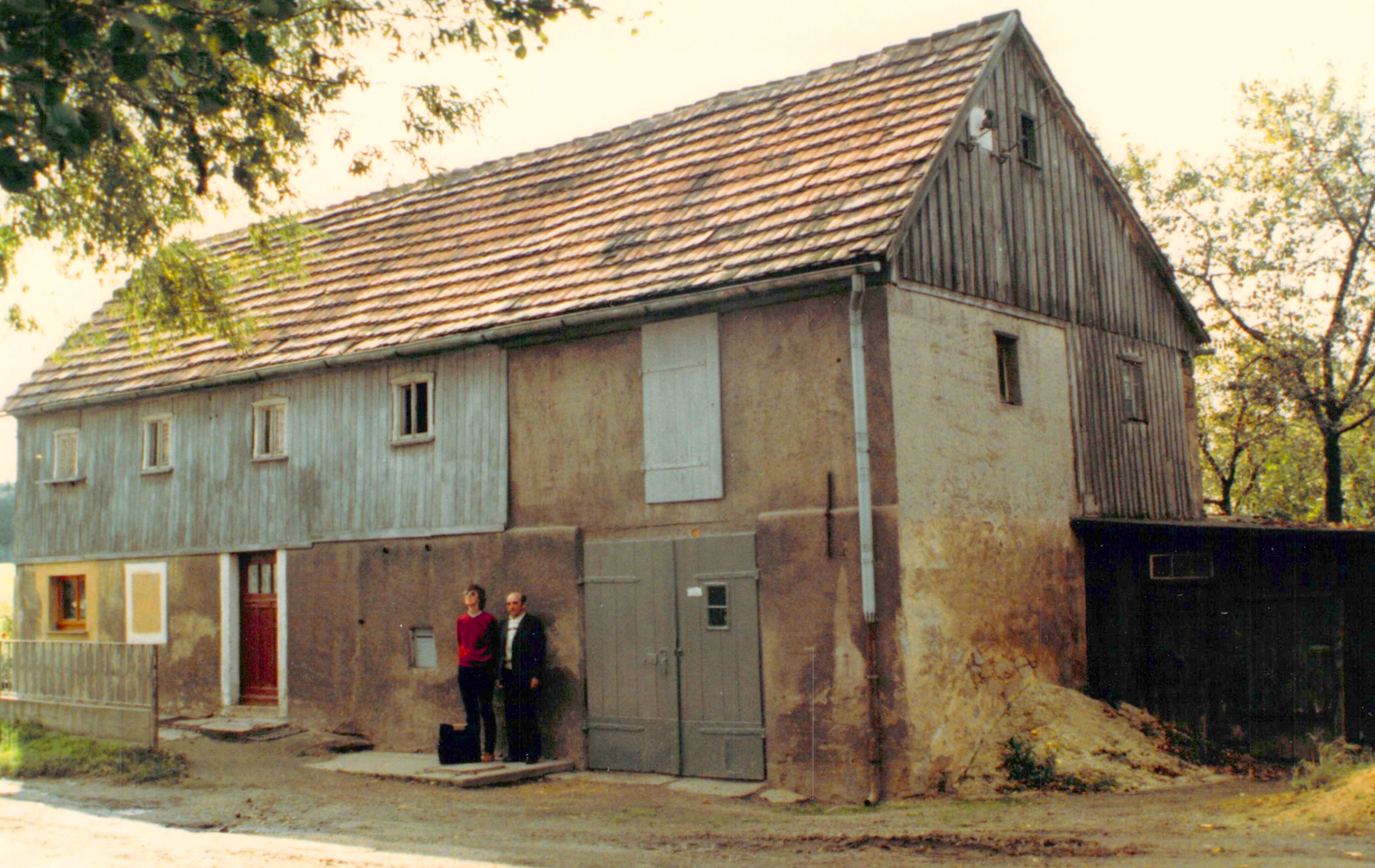

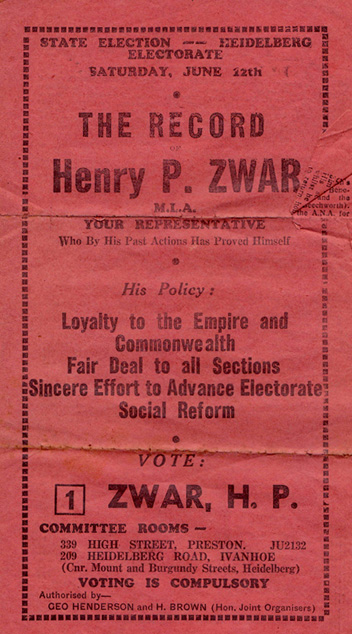

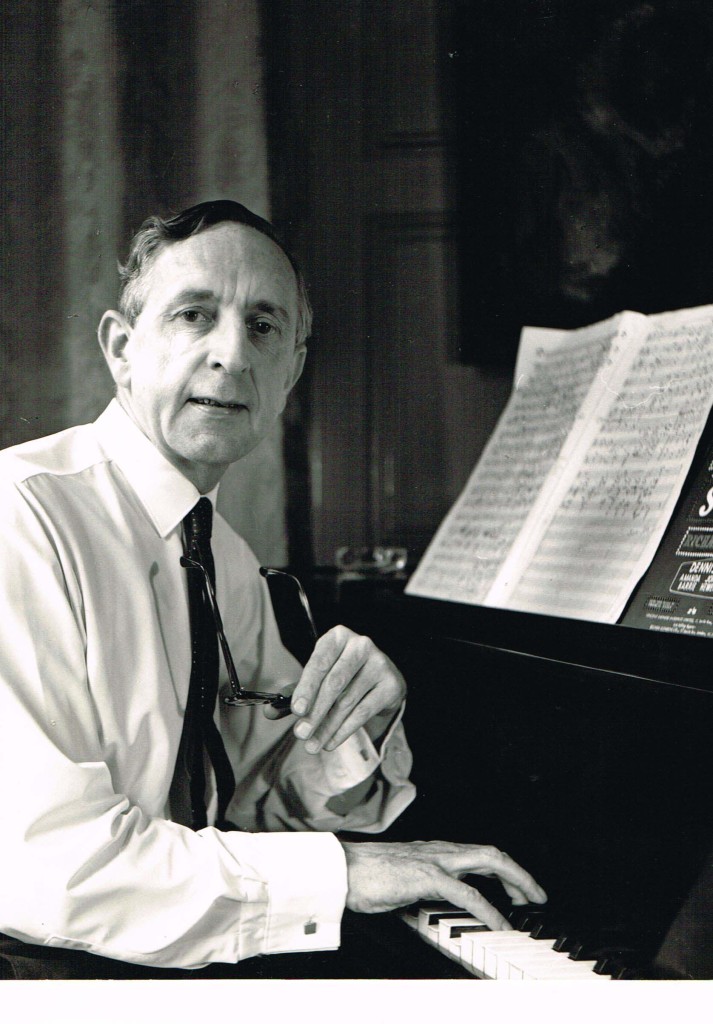
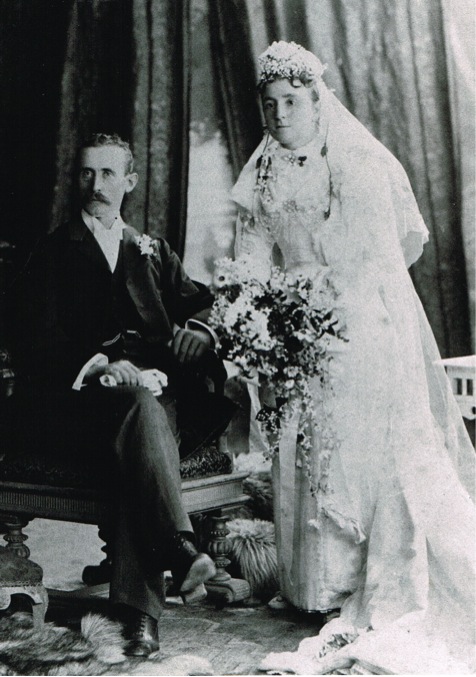
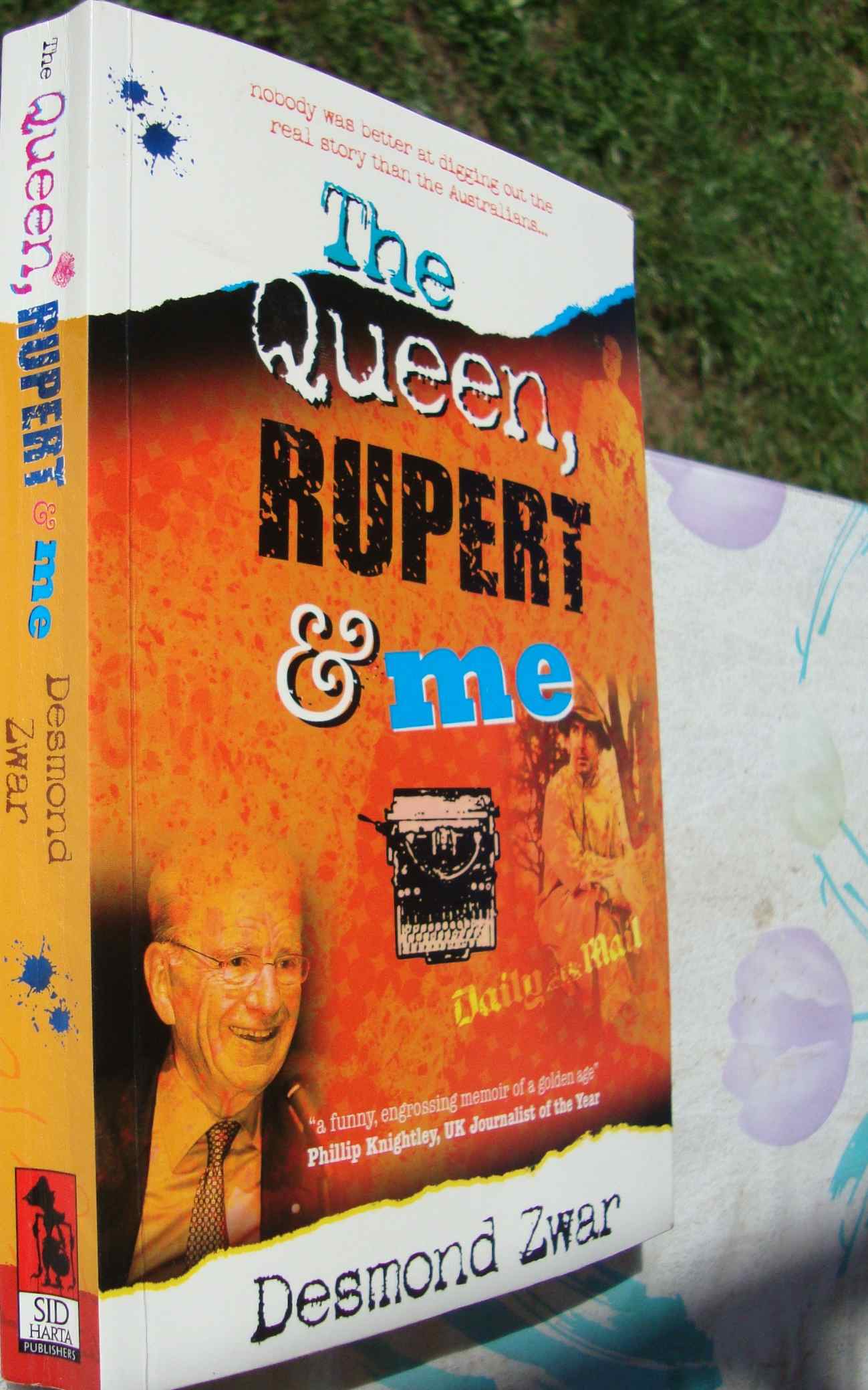
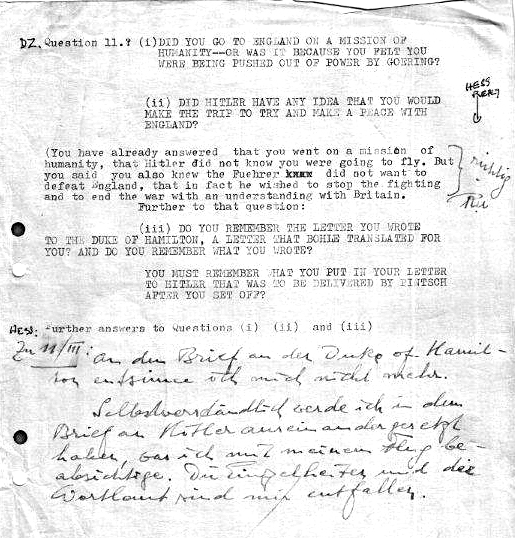 (Questions by Desmond and handwritten answers by Rudolf Hess
(Questions by Desmond and handwritten answers by Rudolf Hess